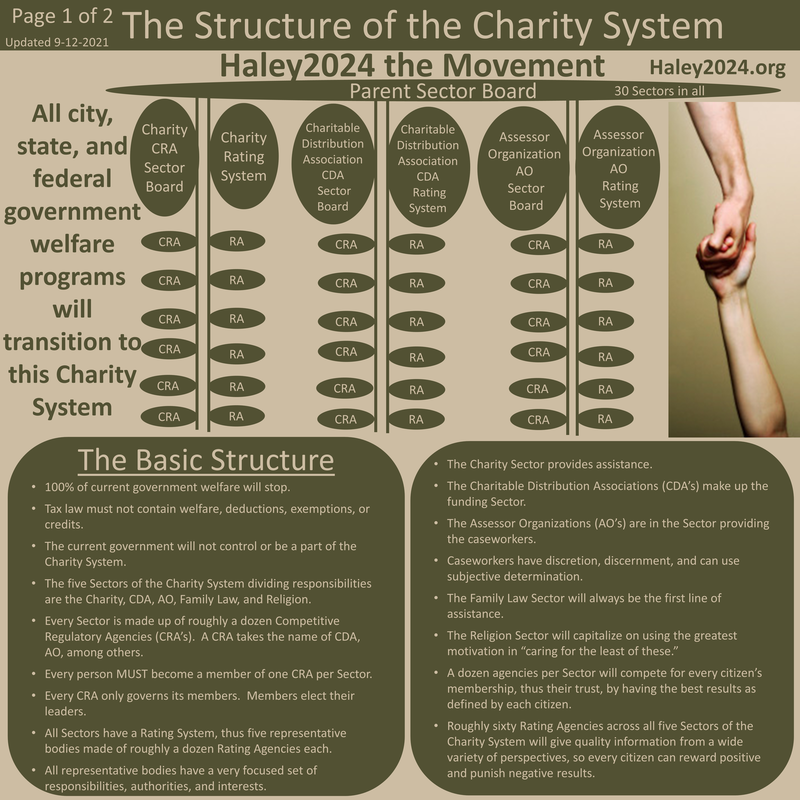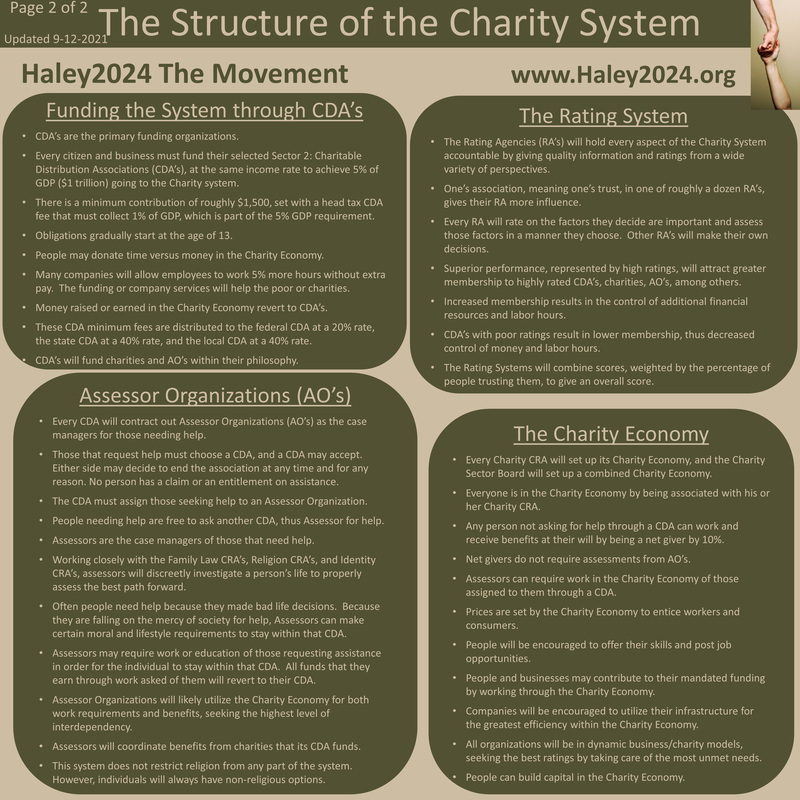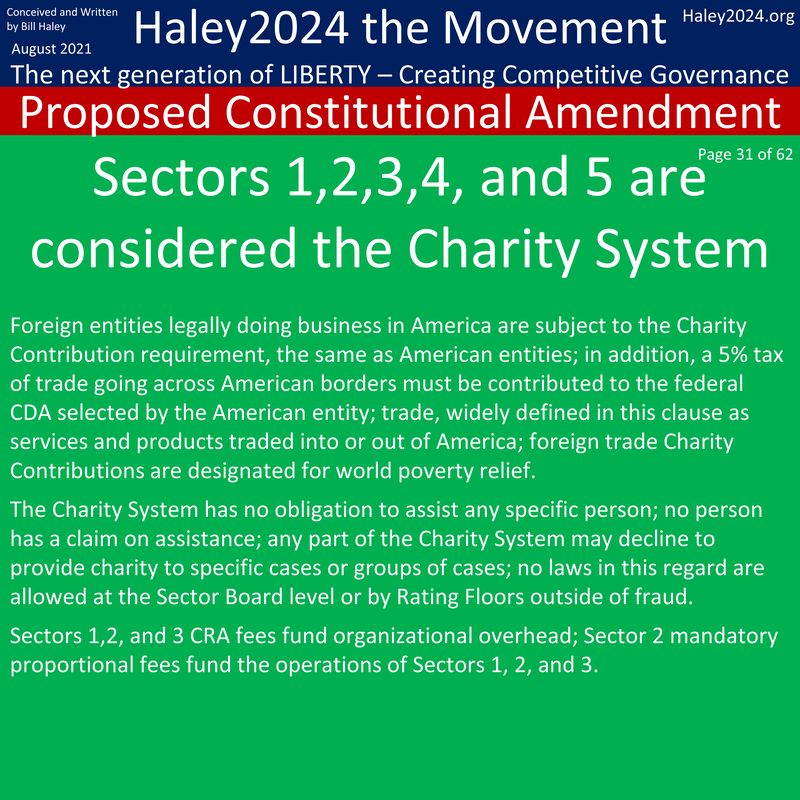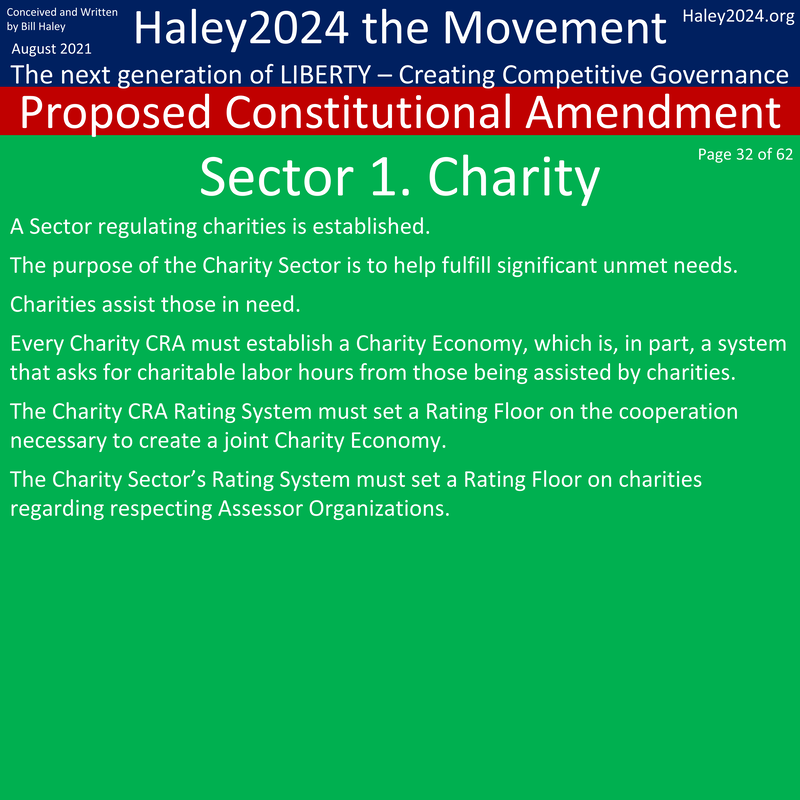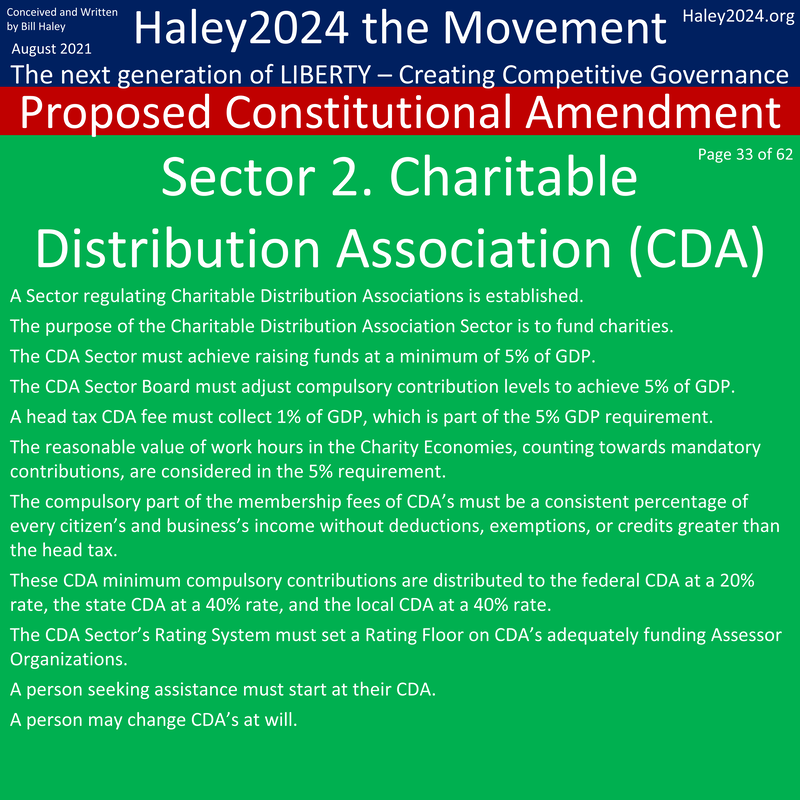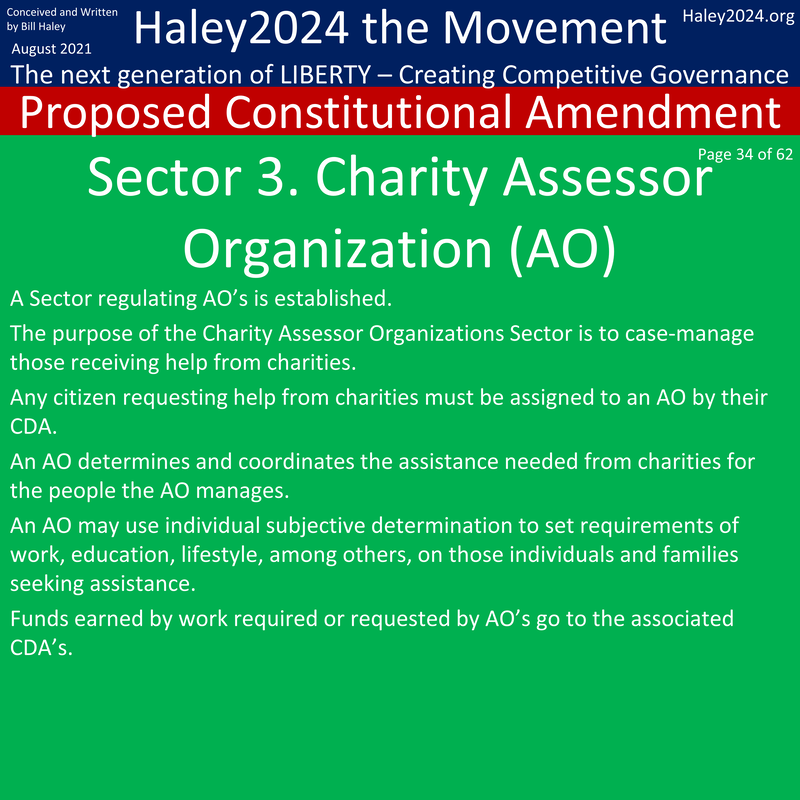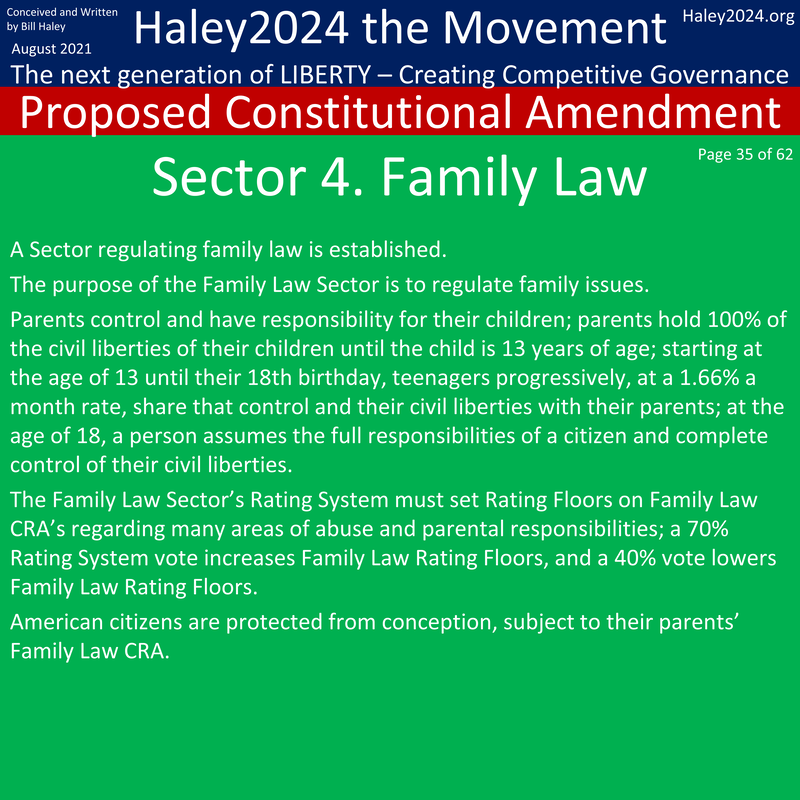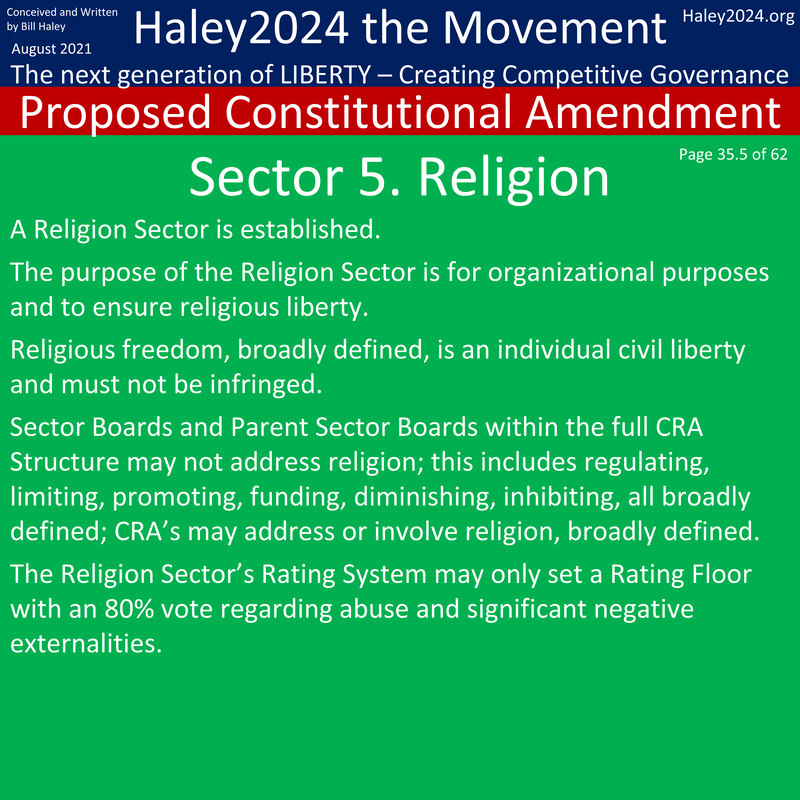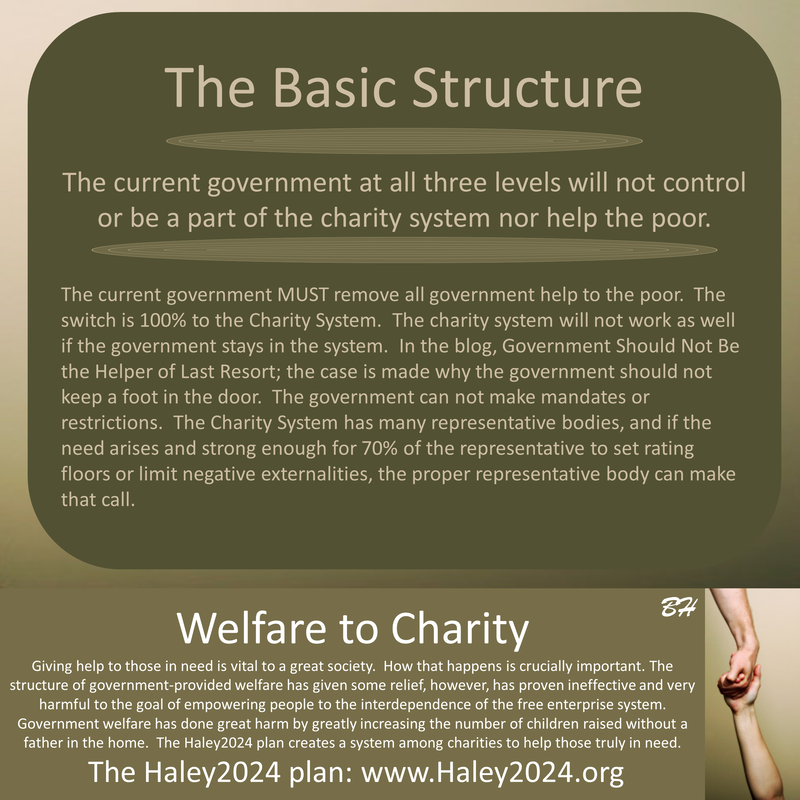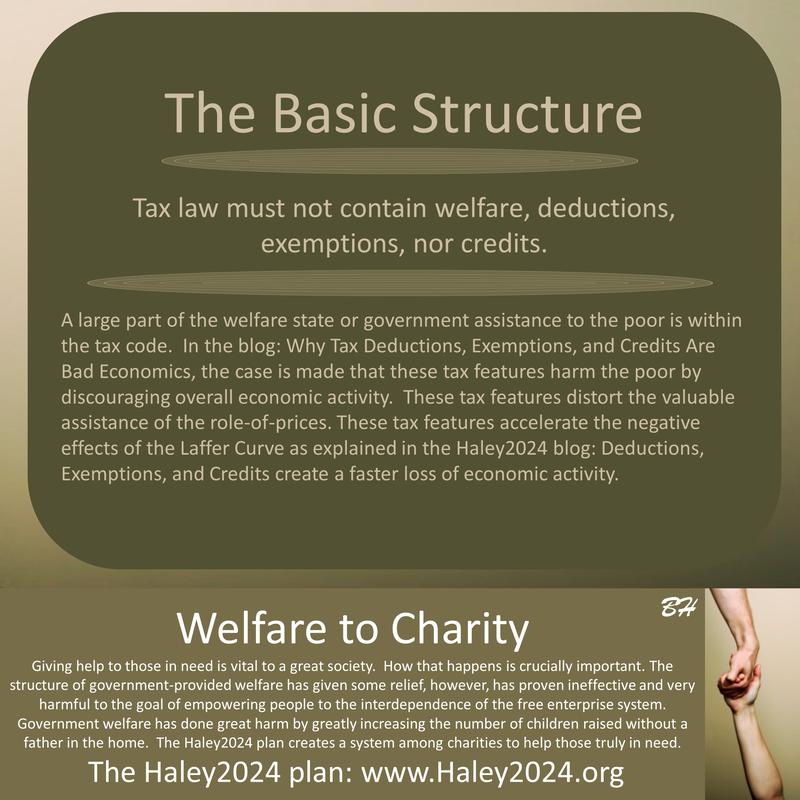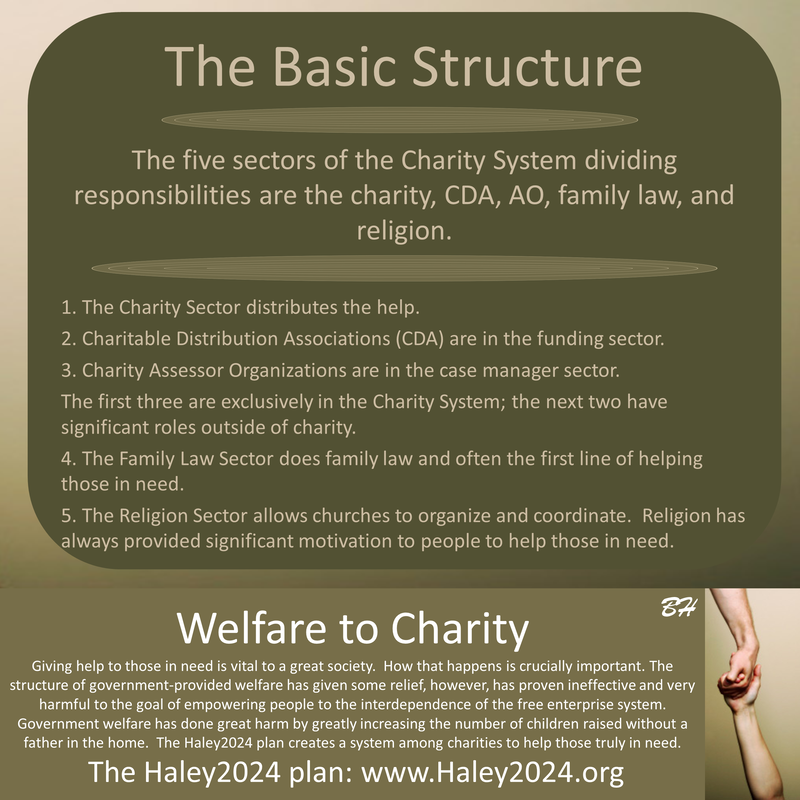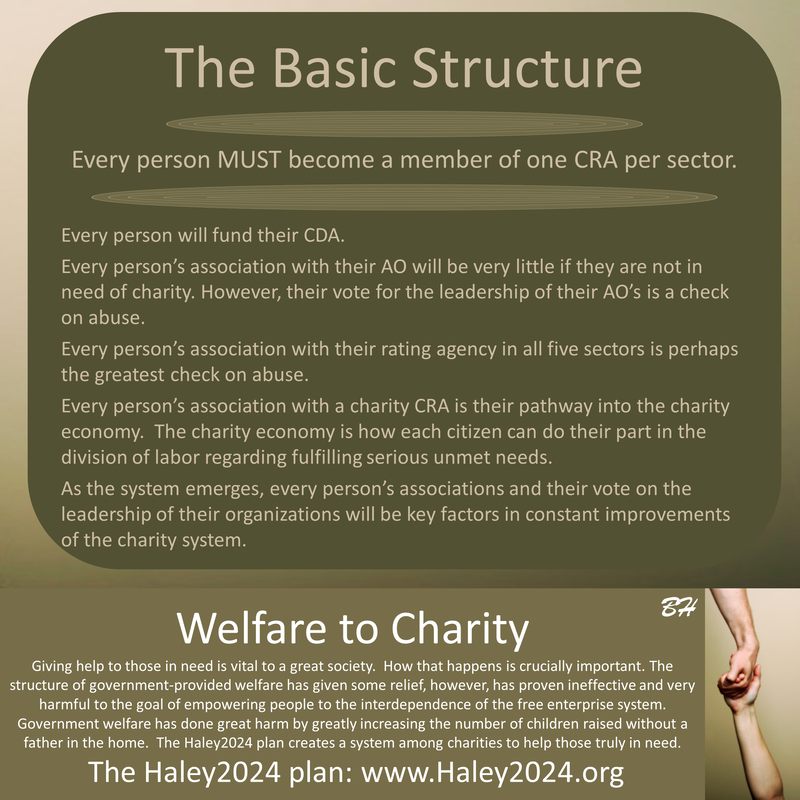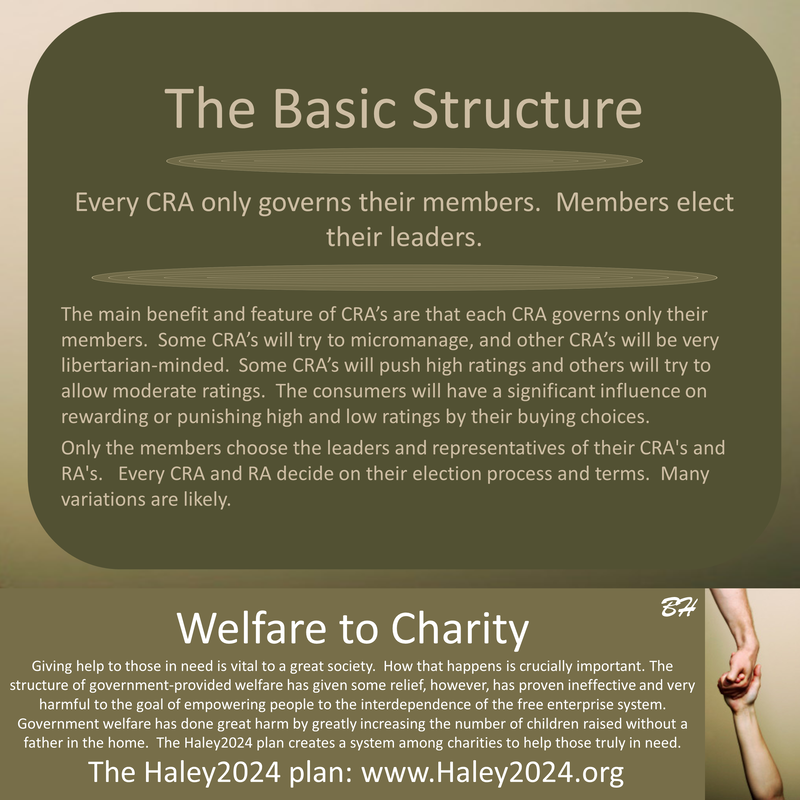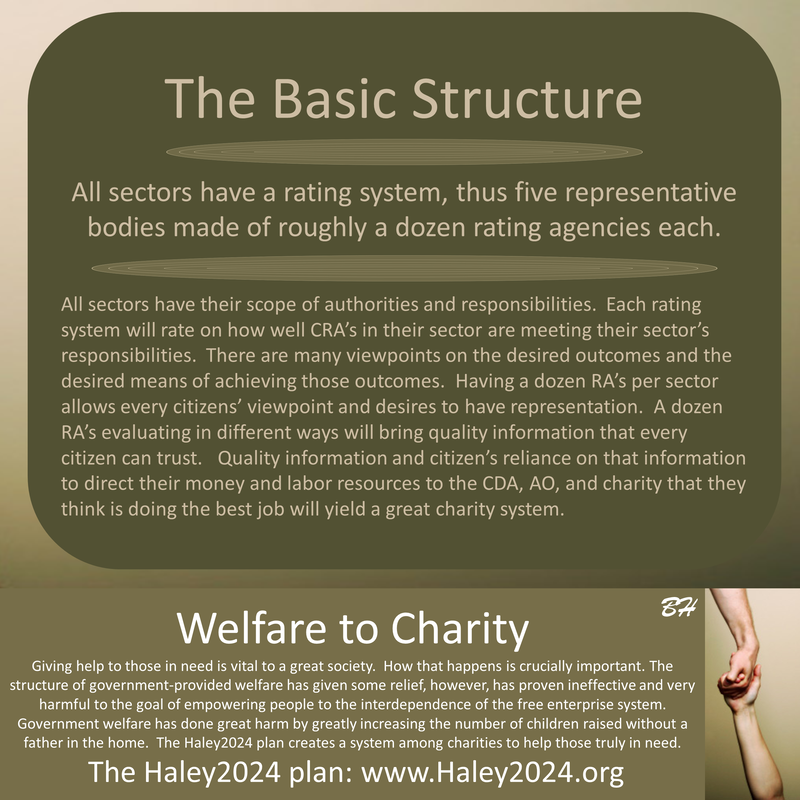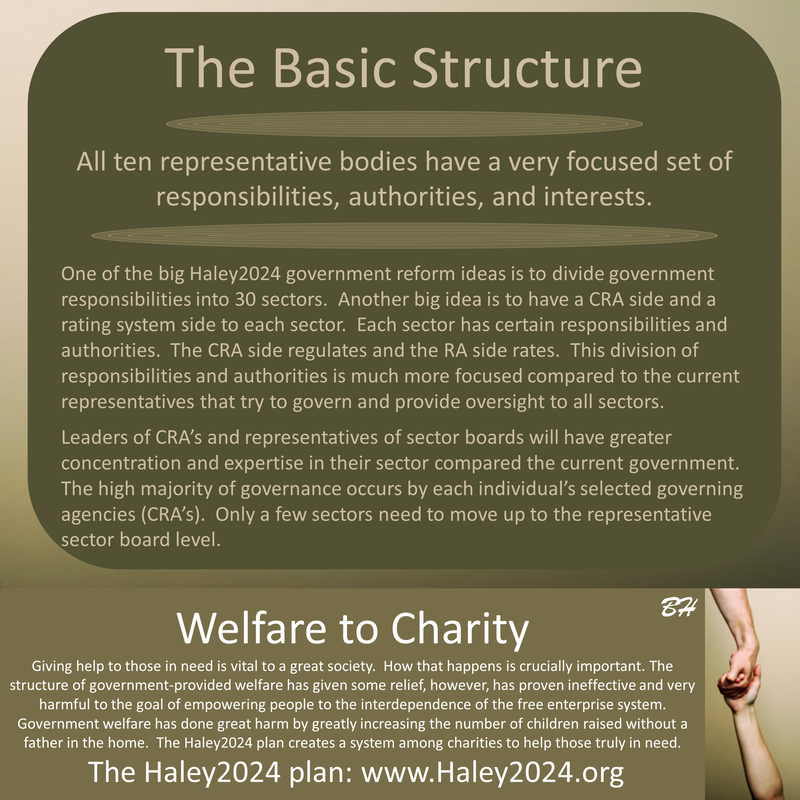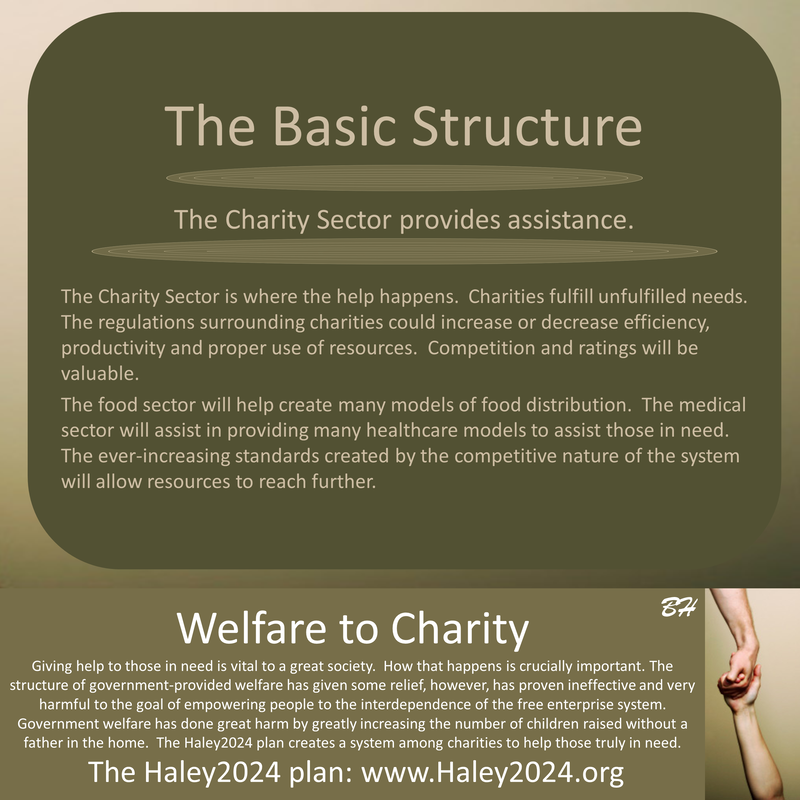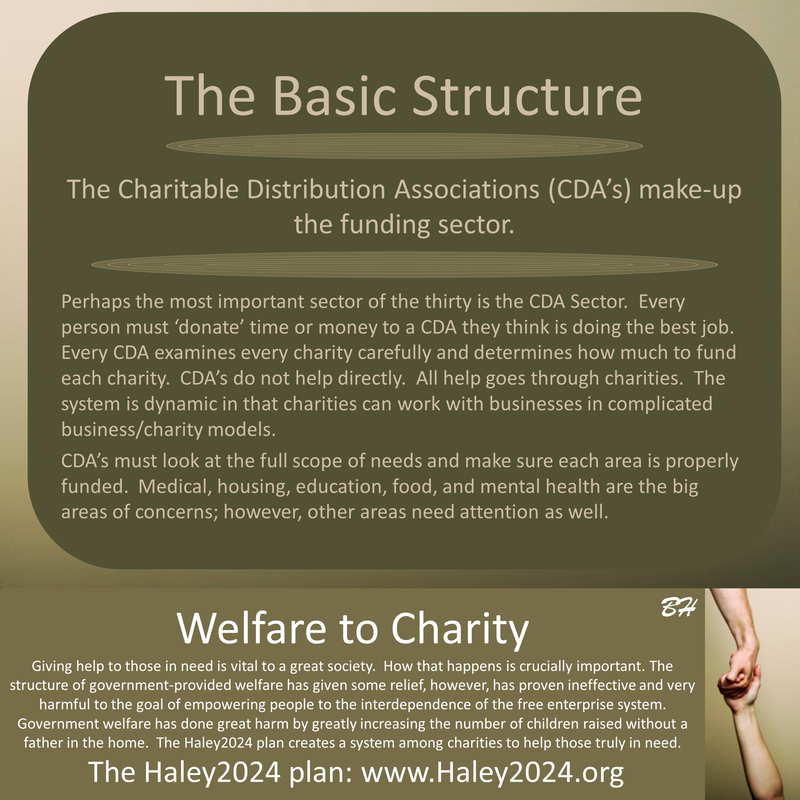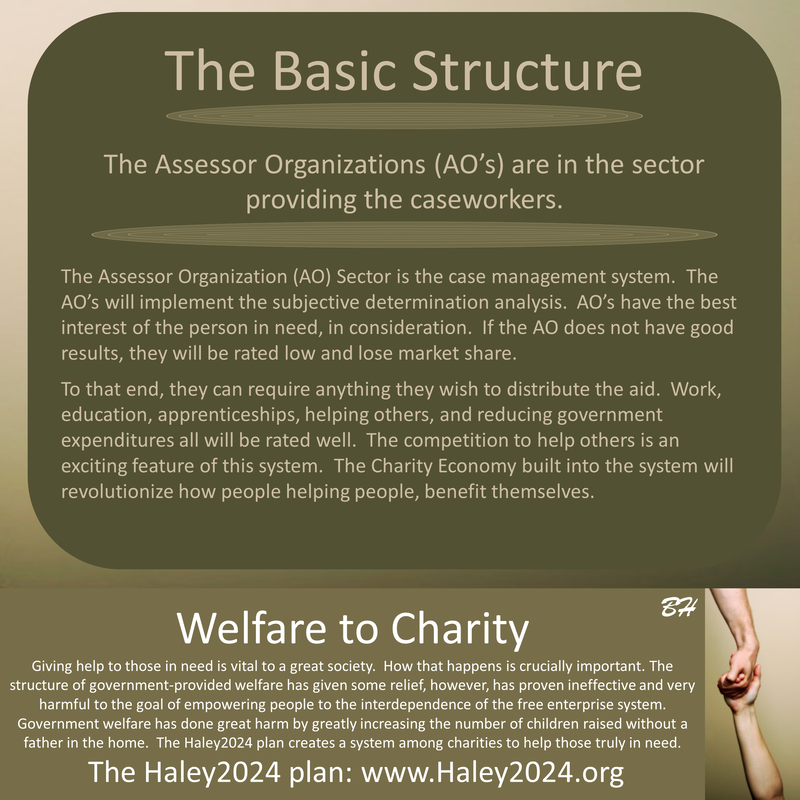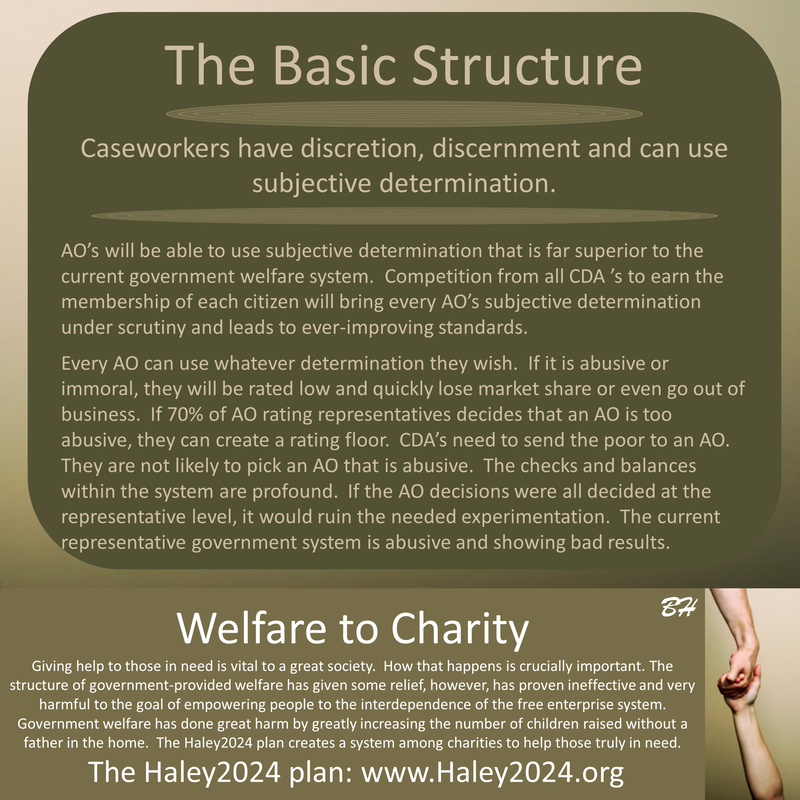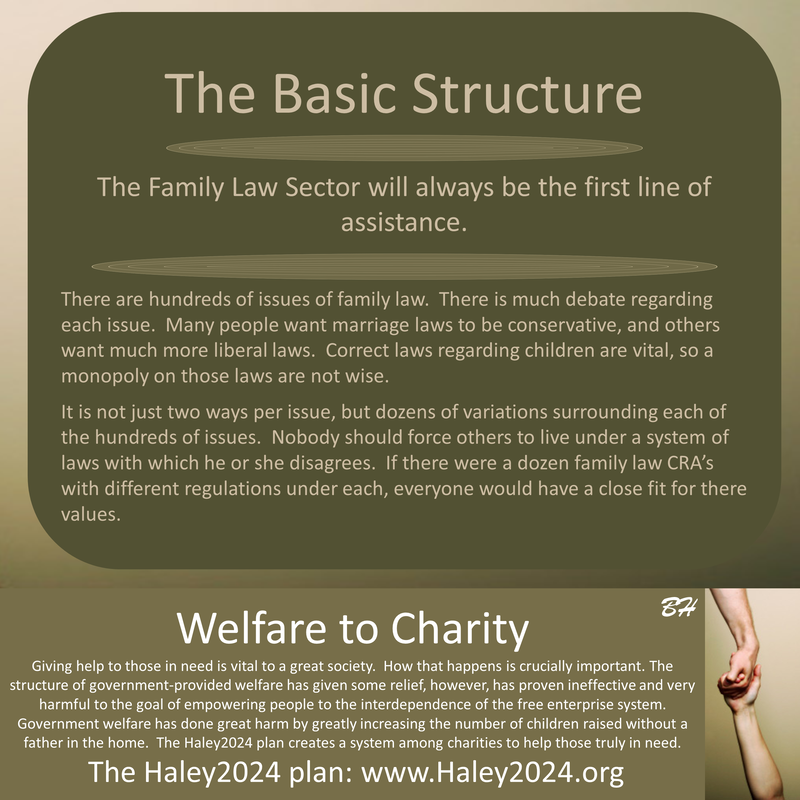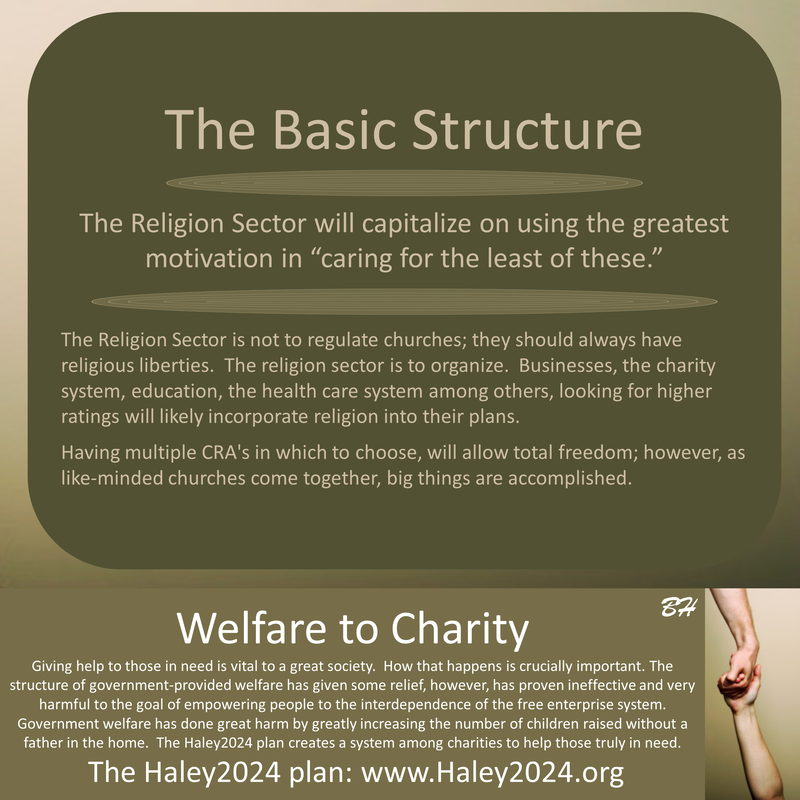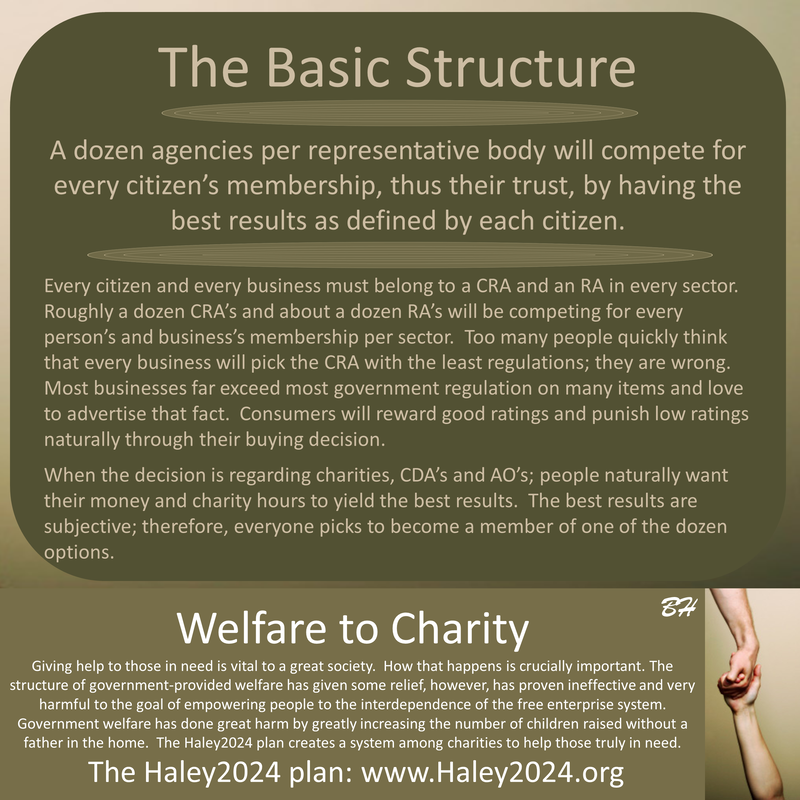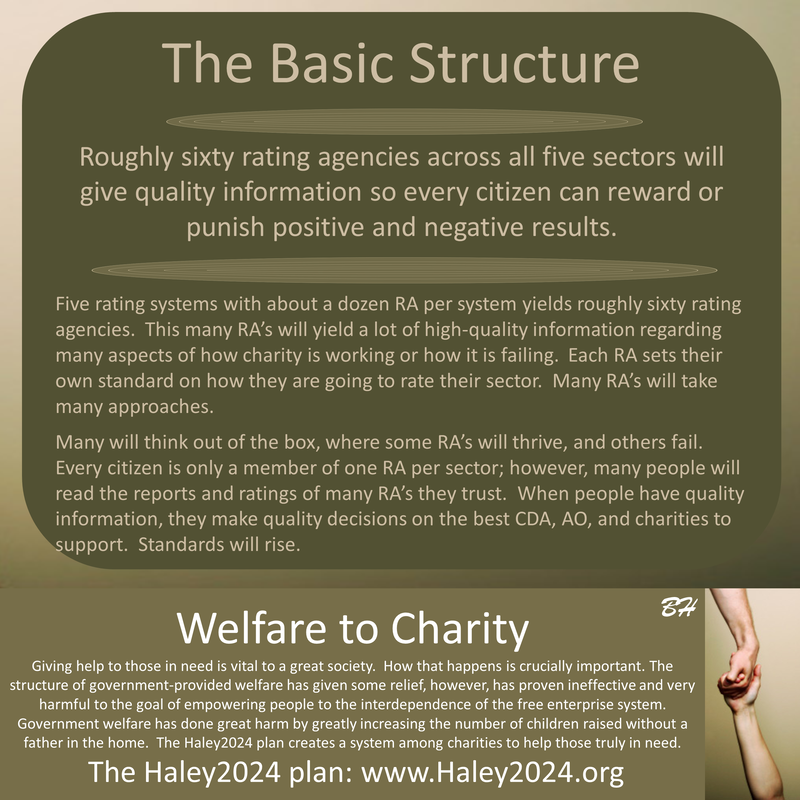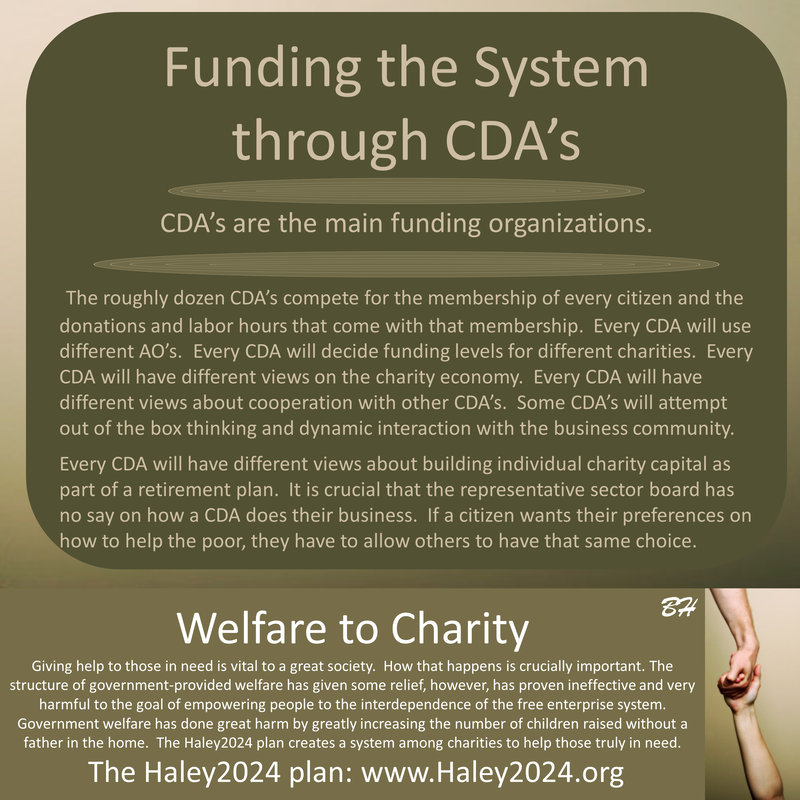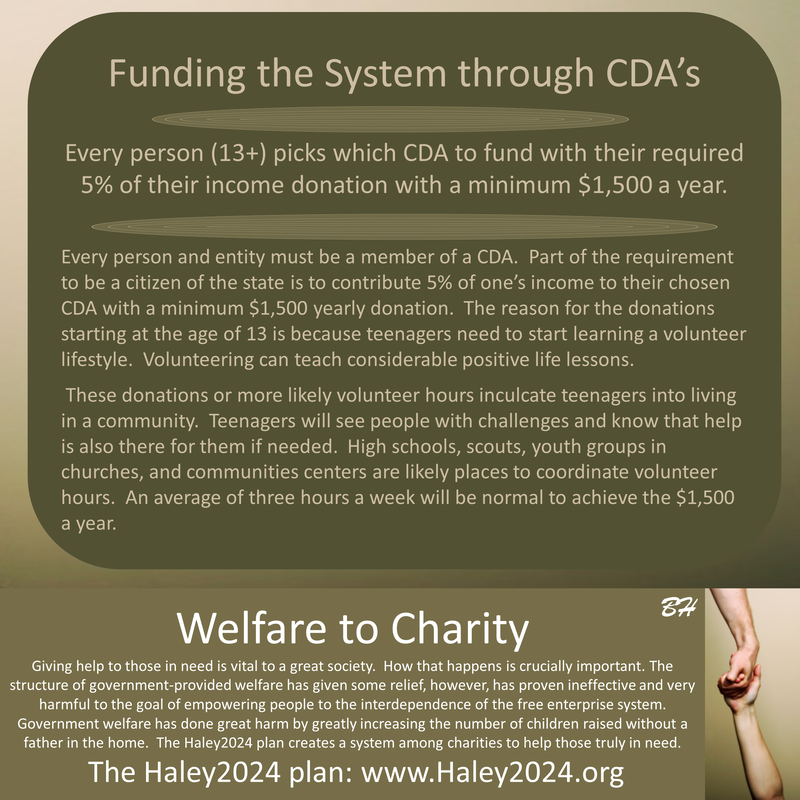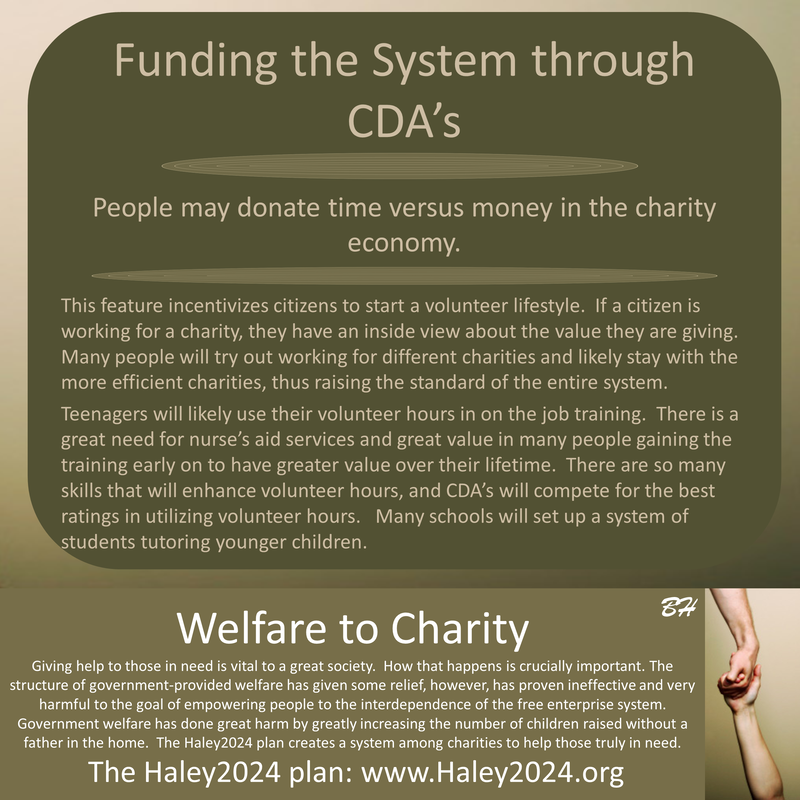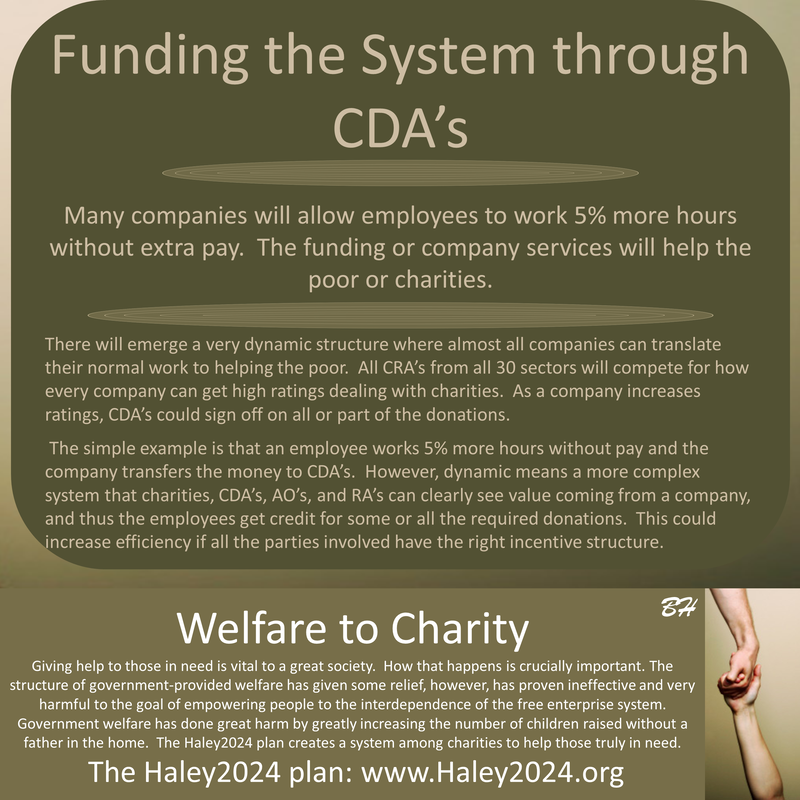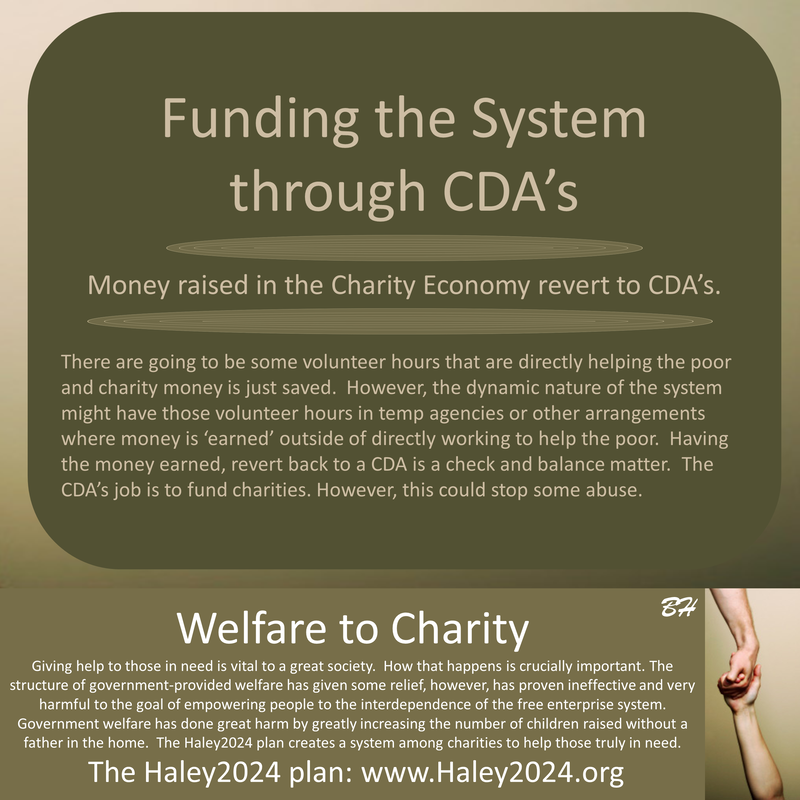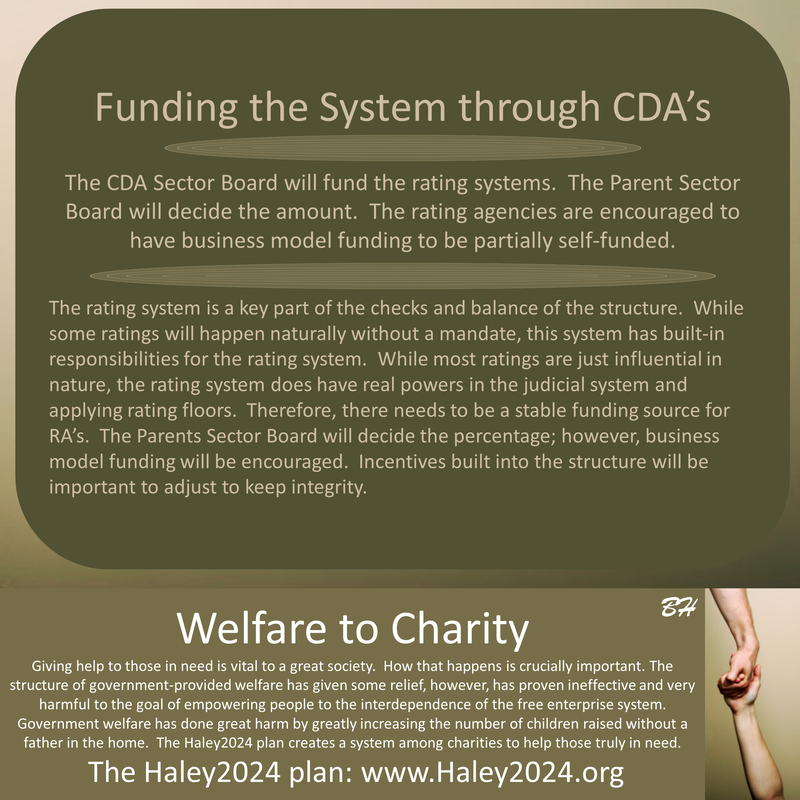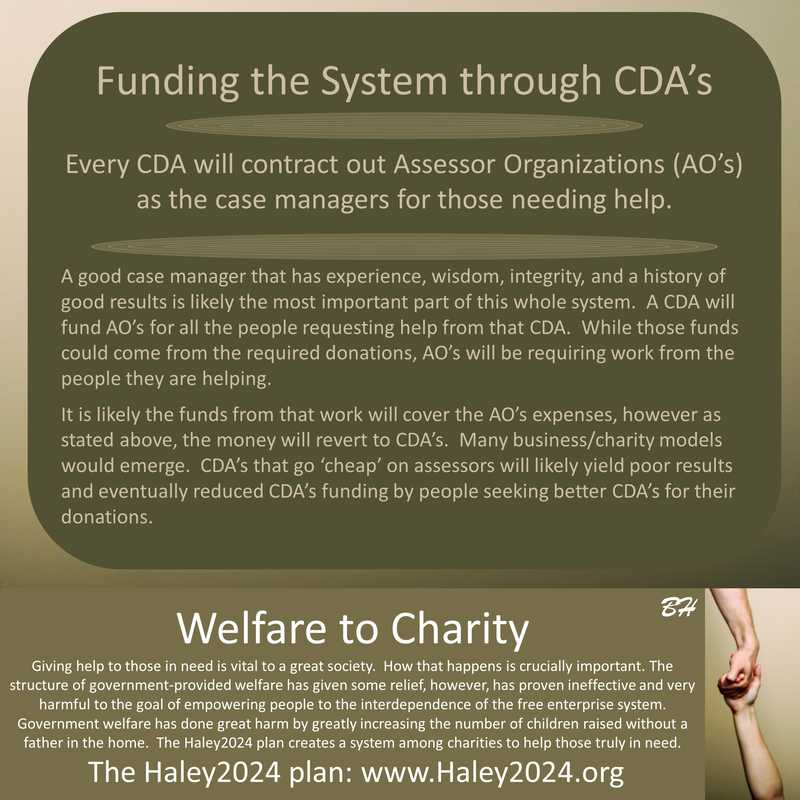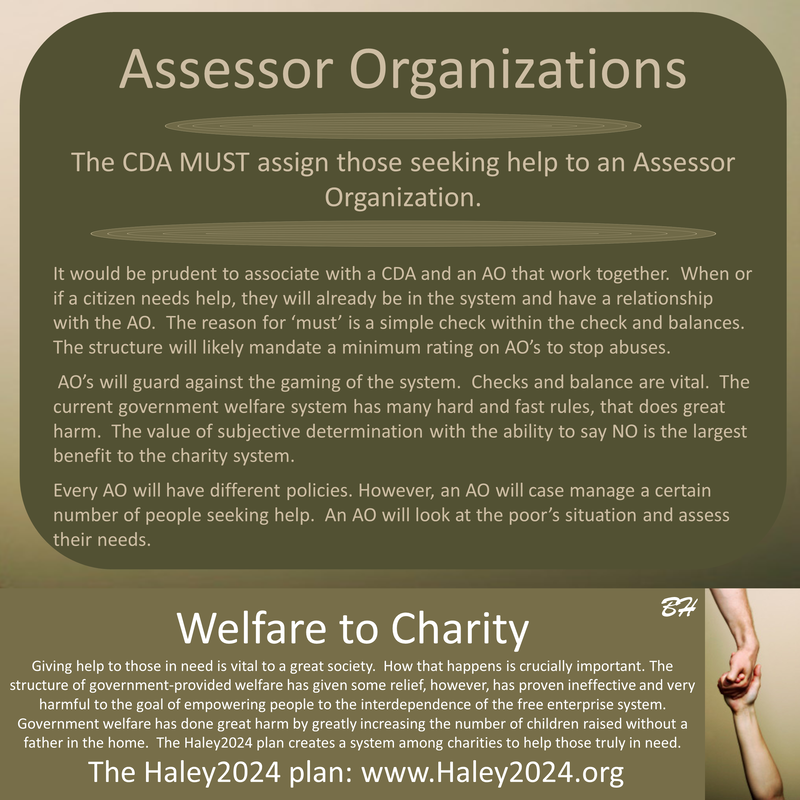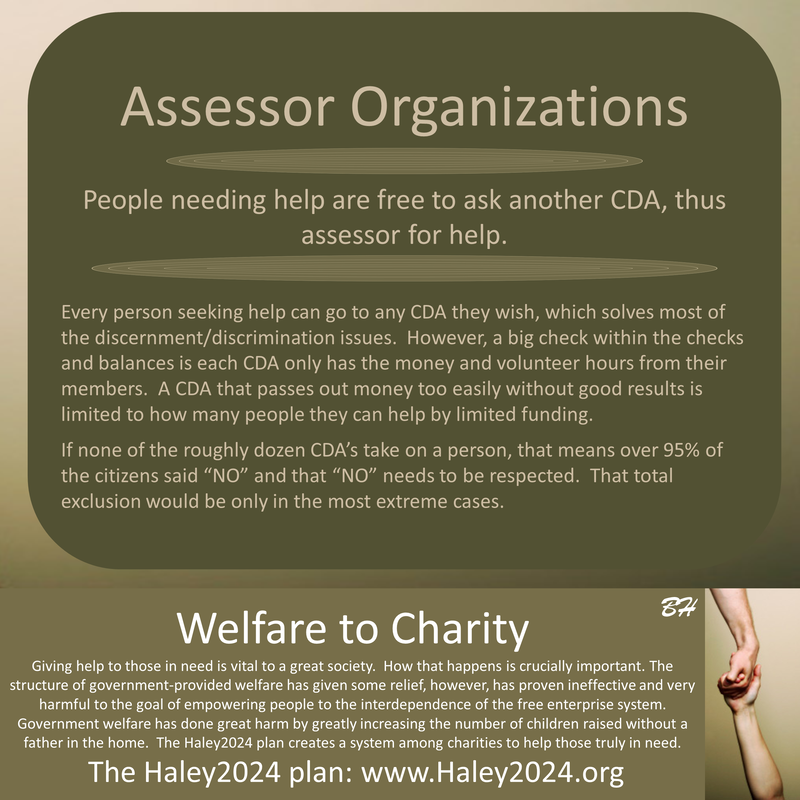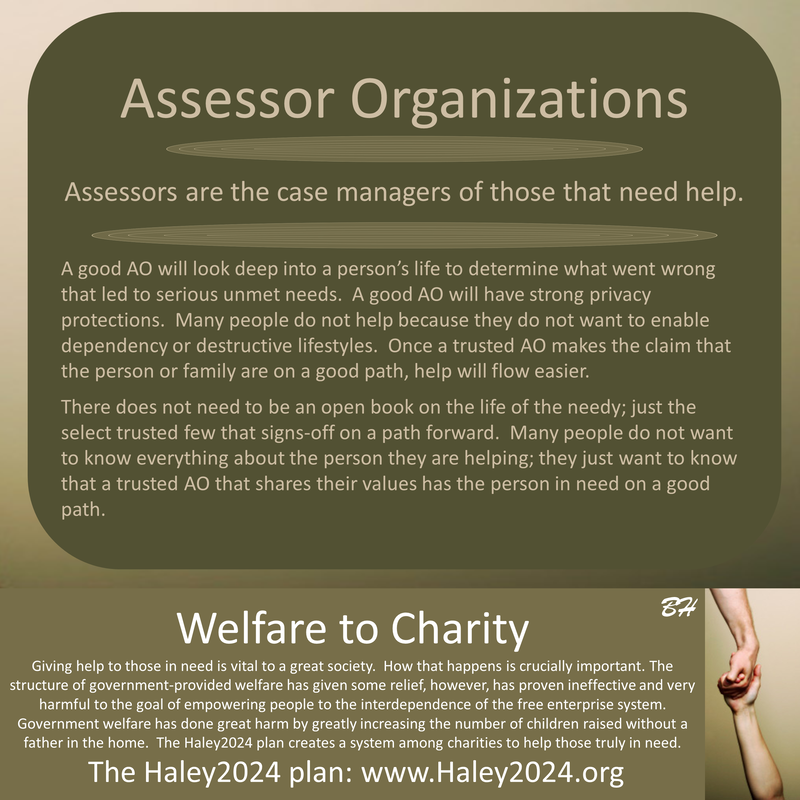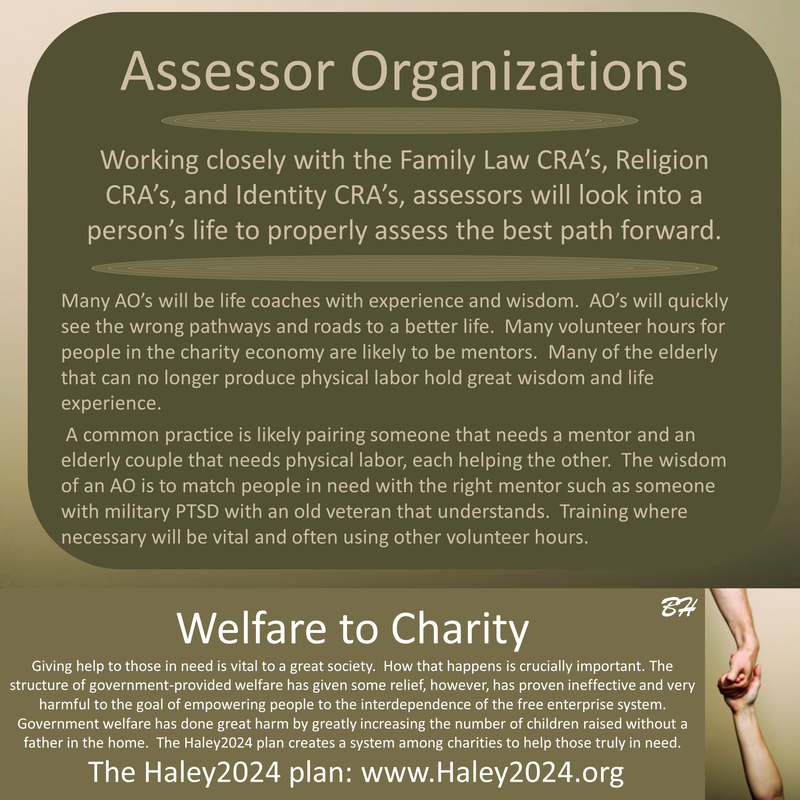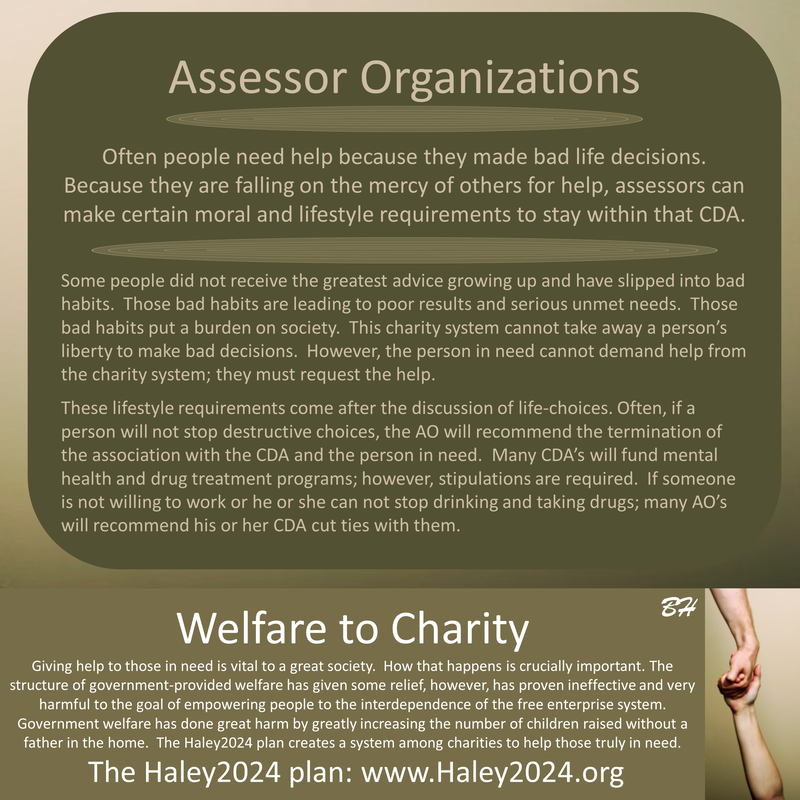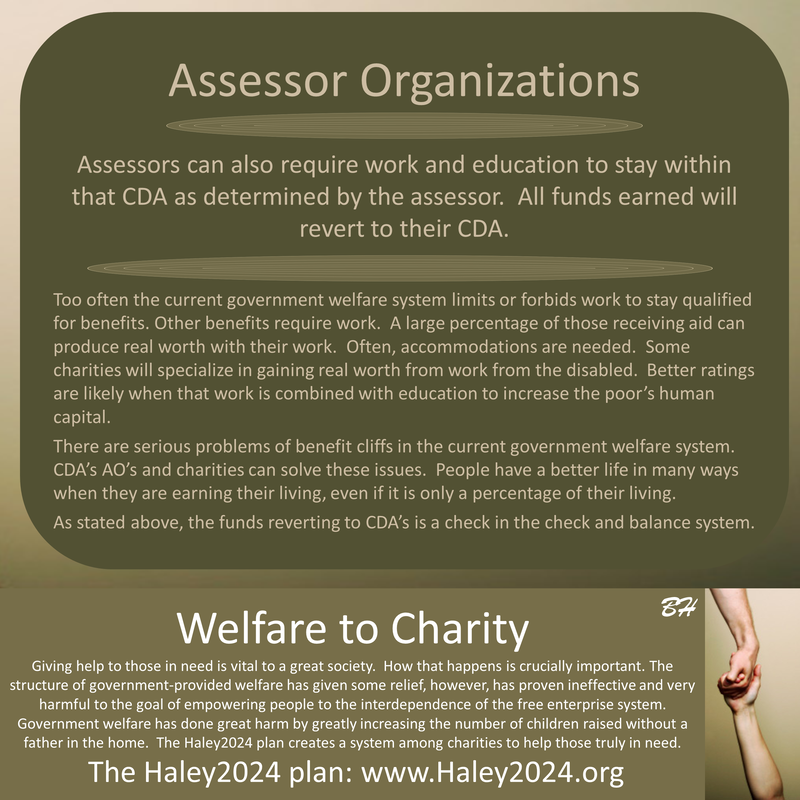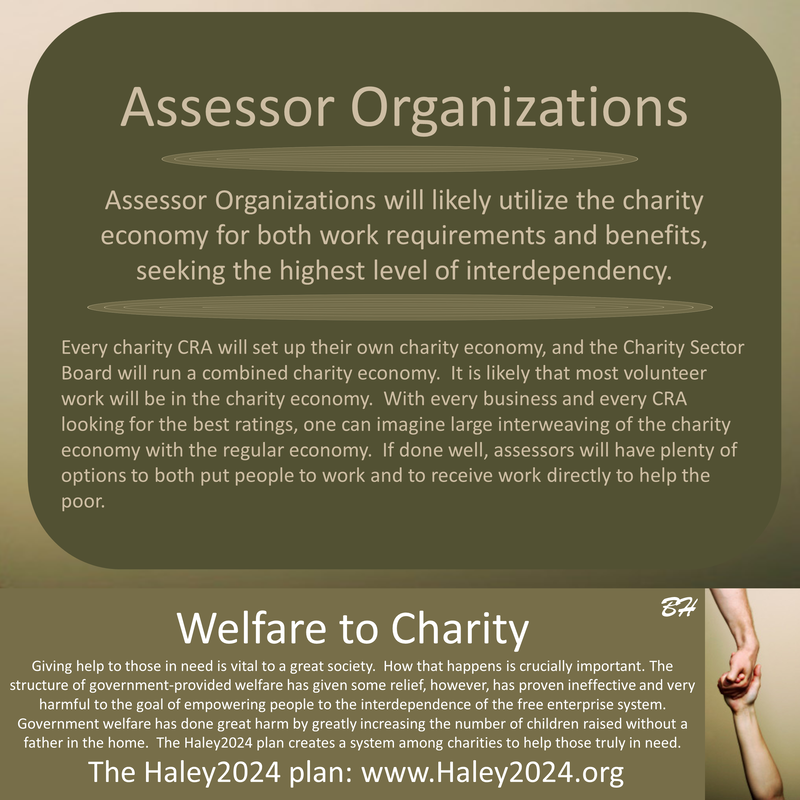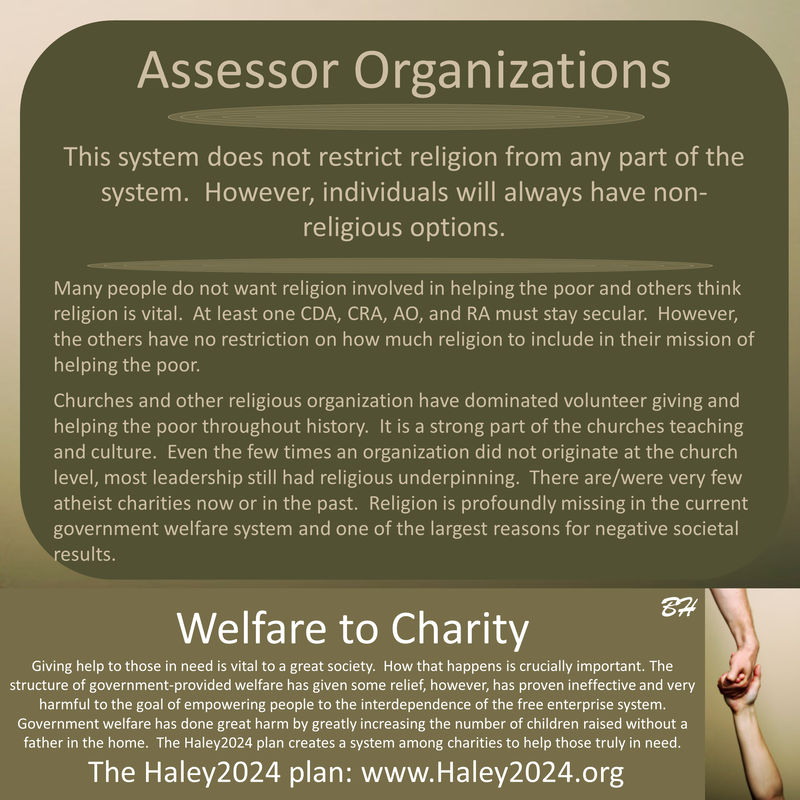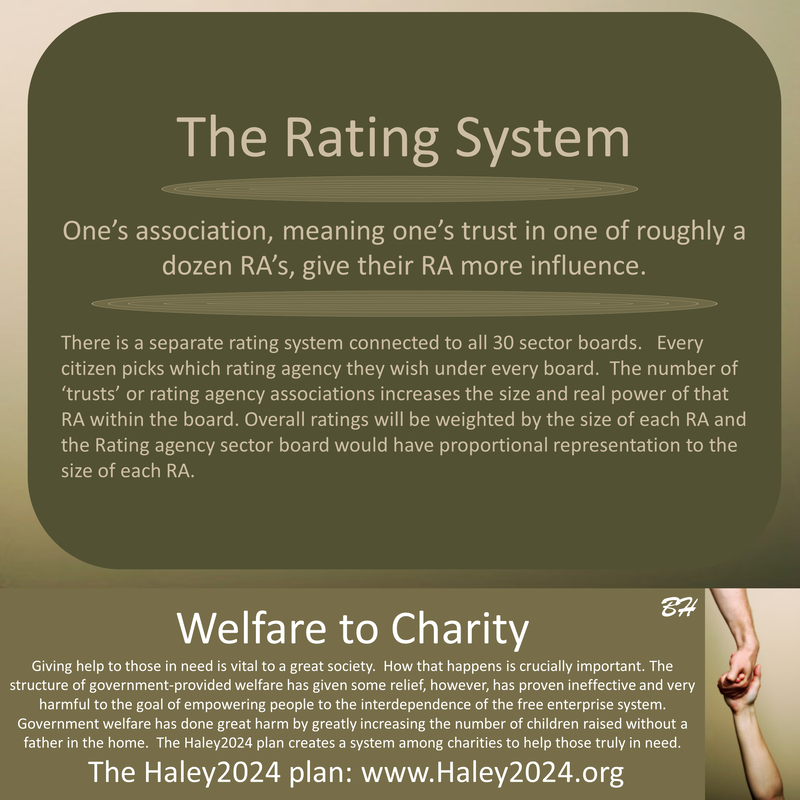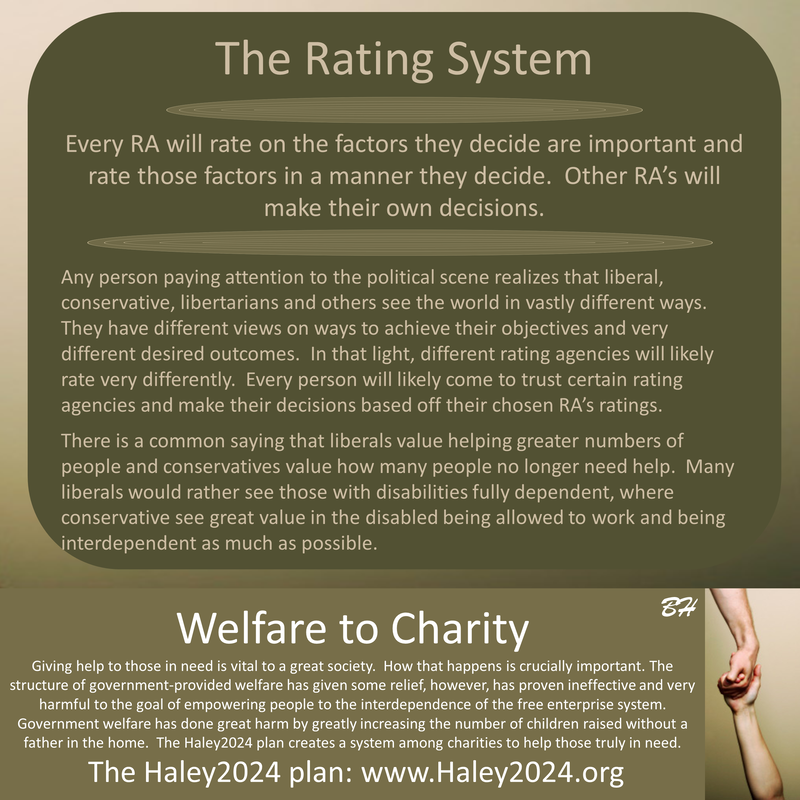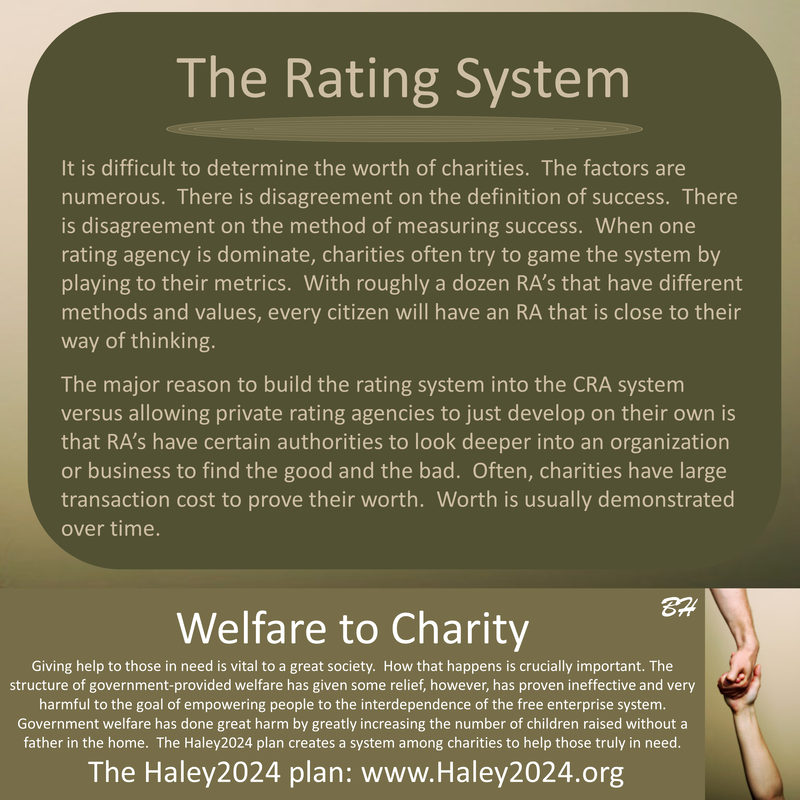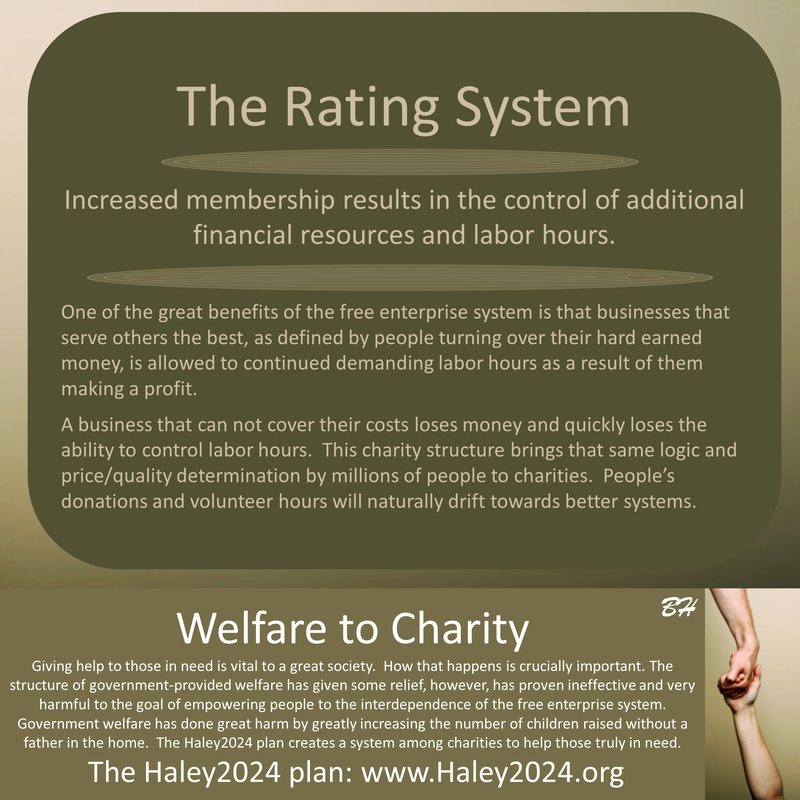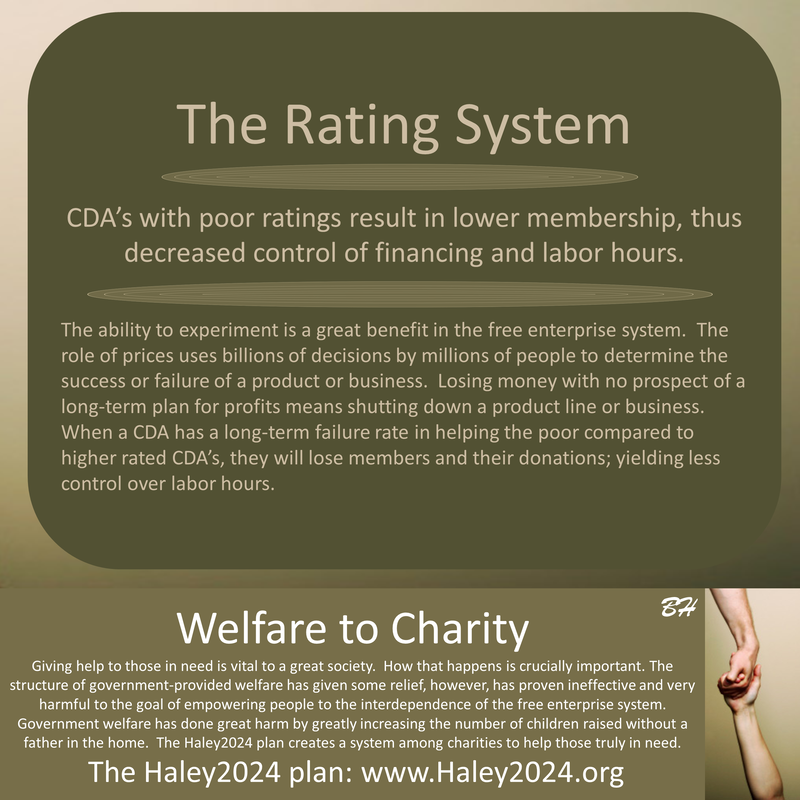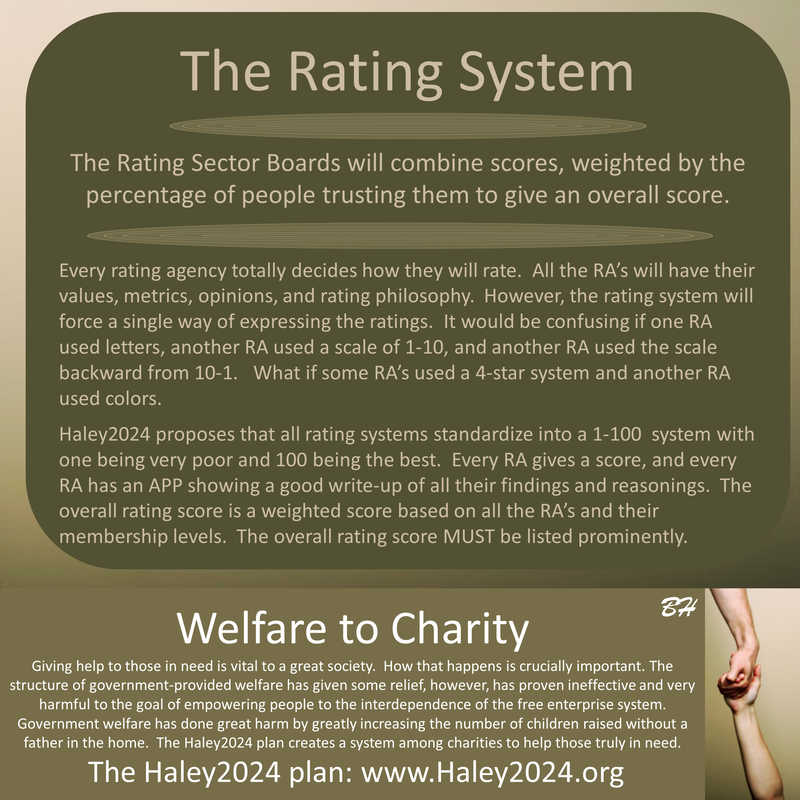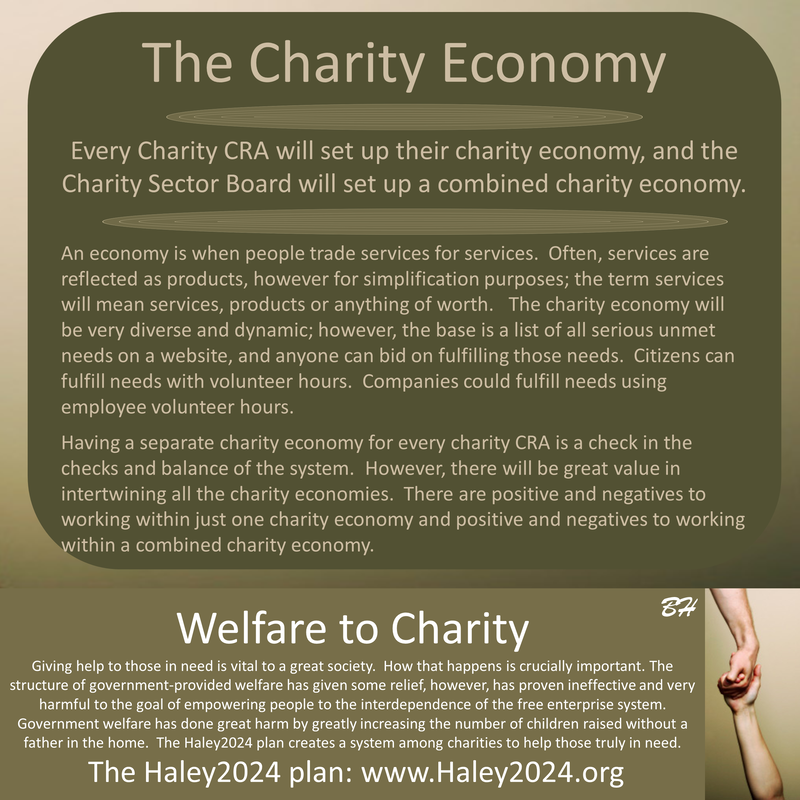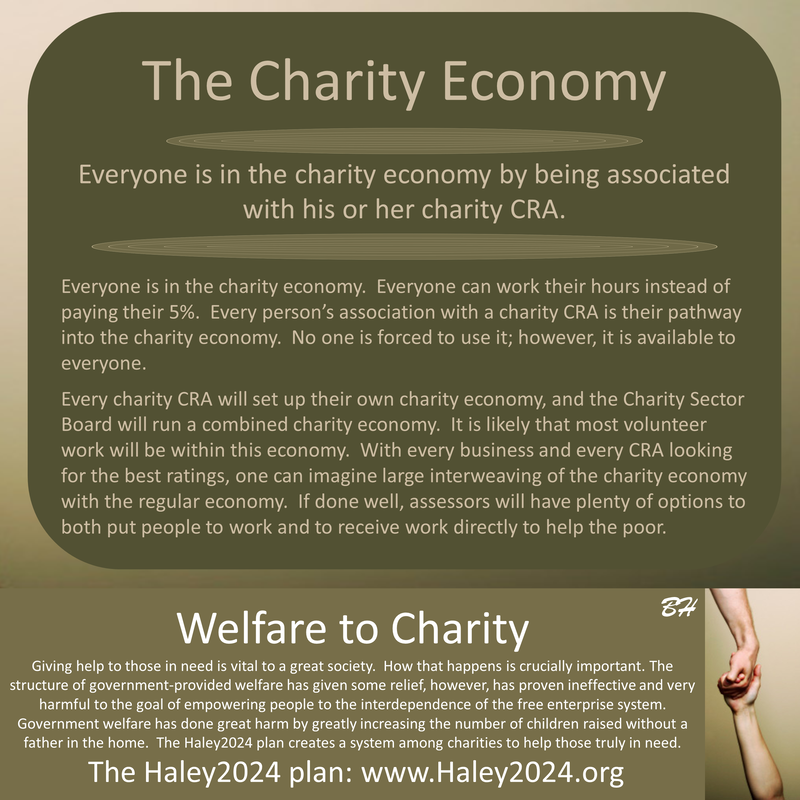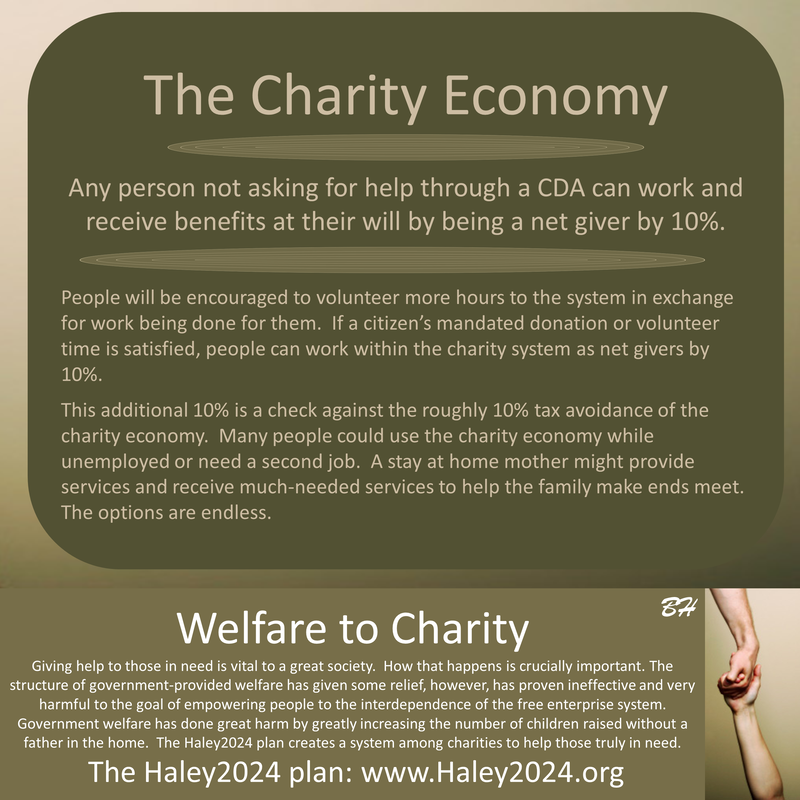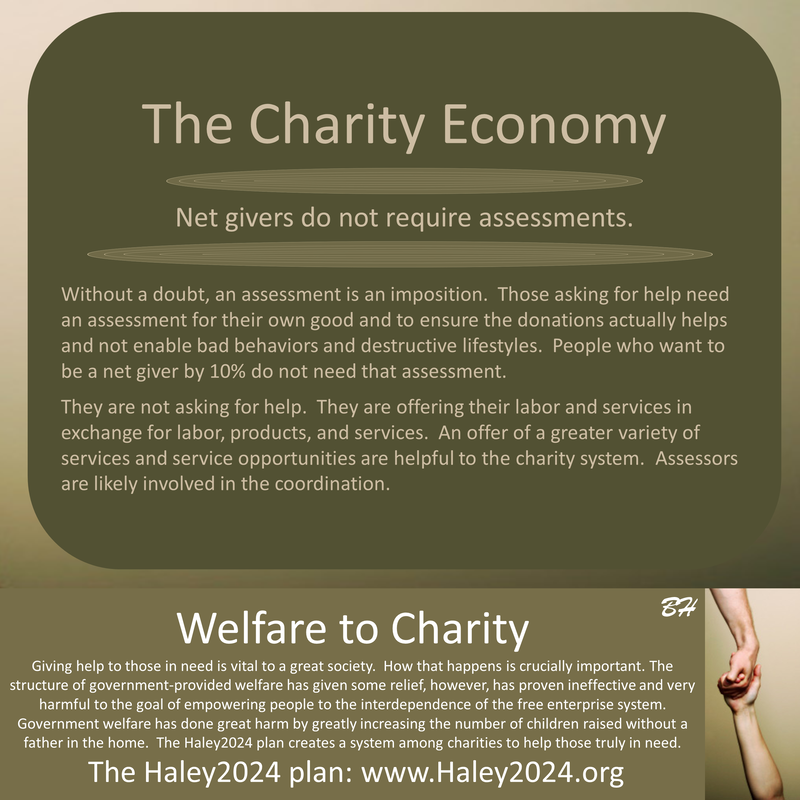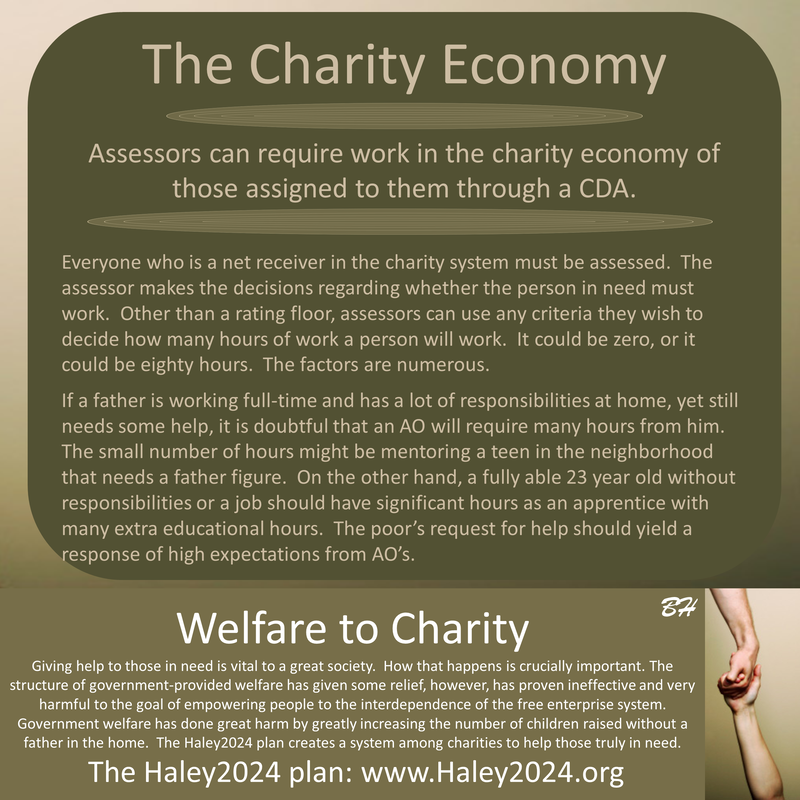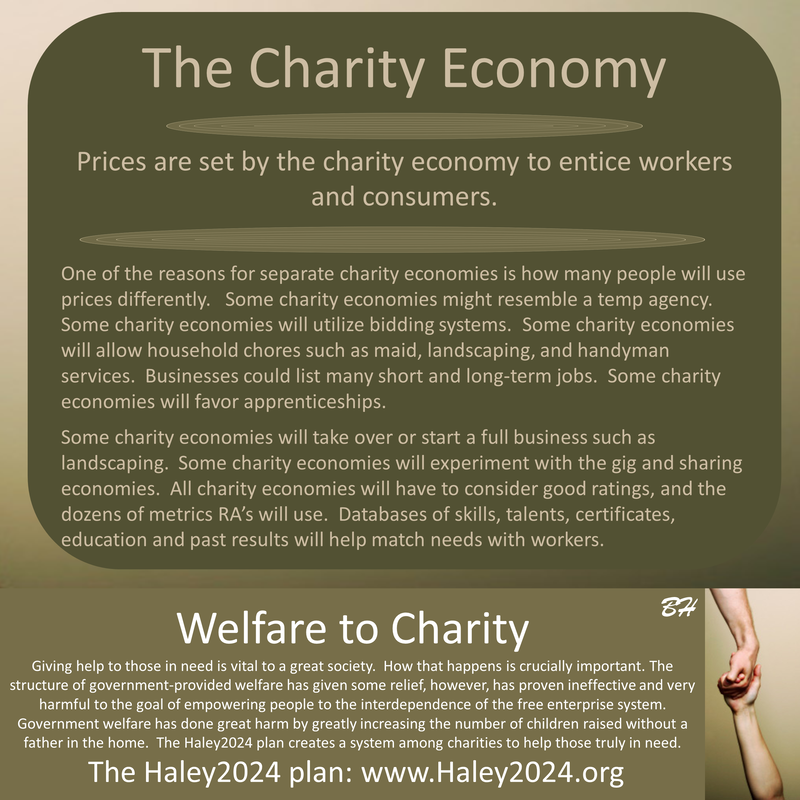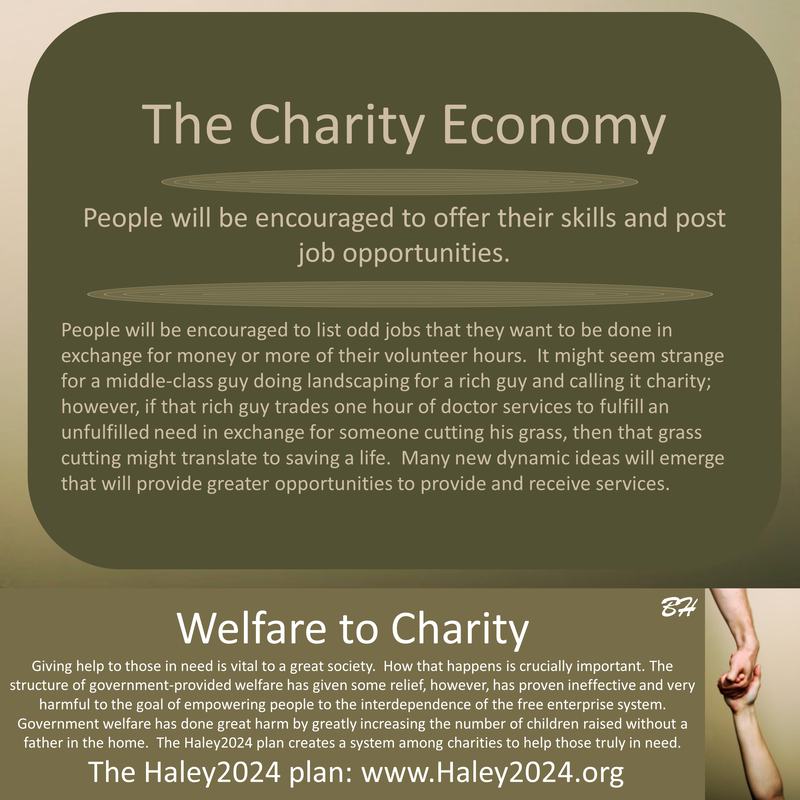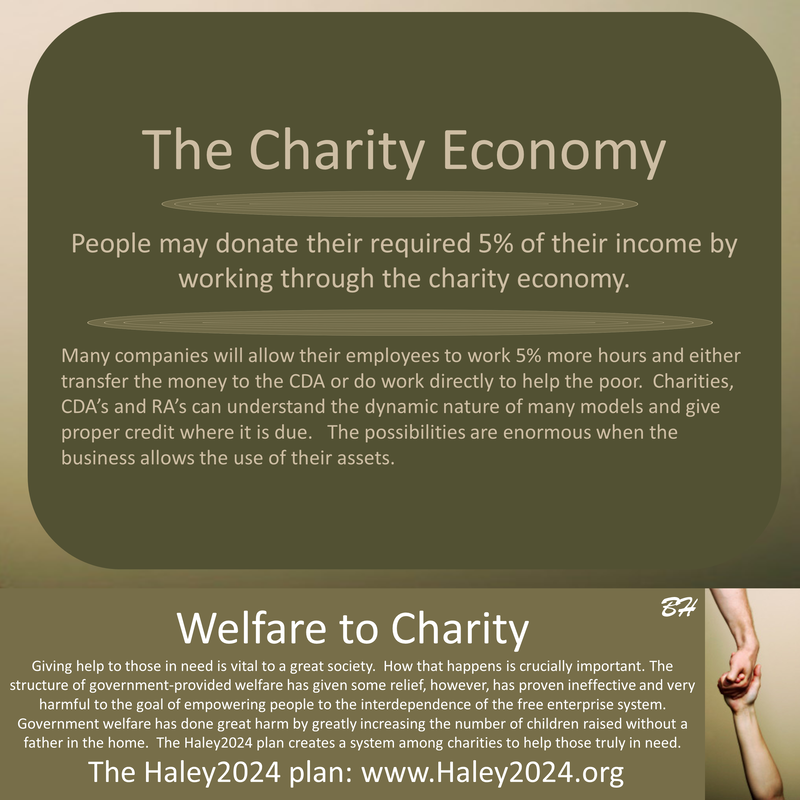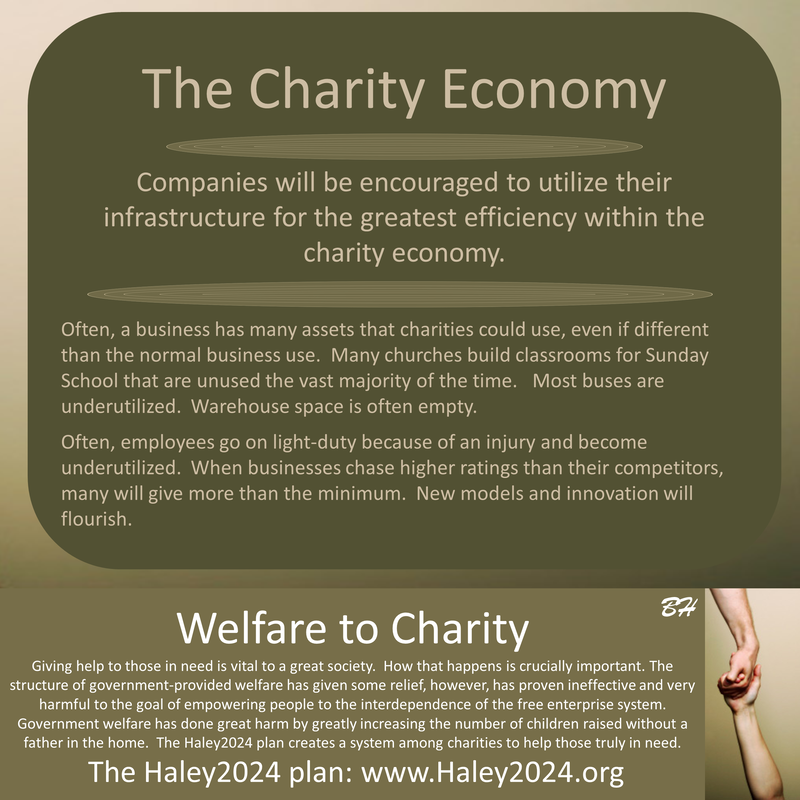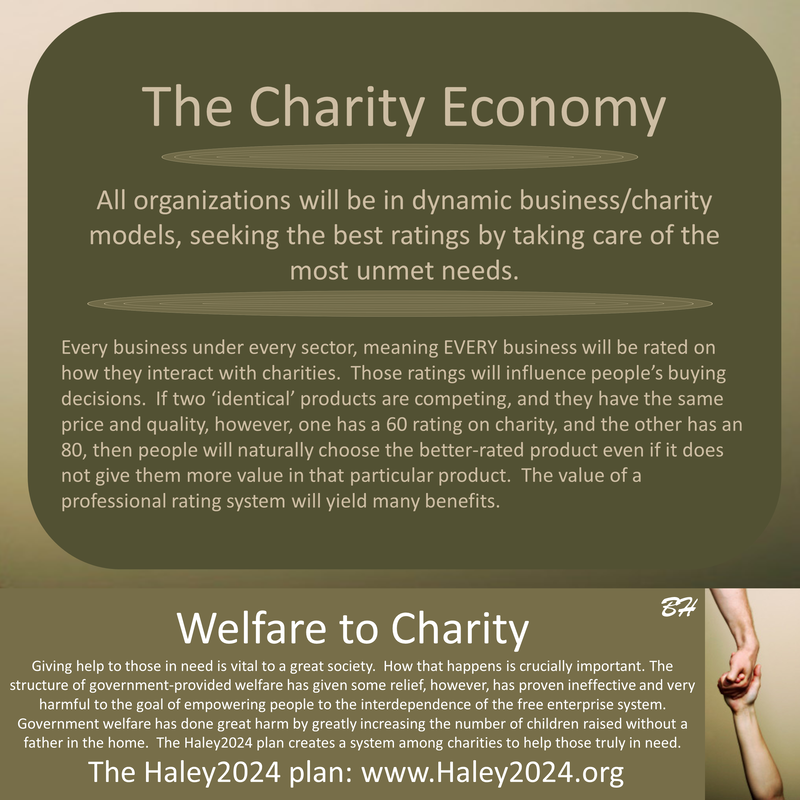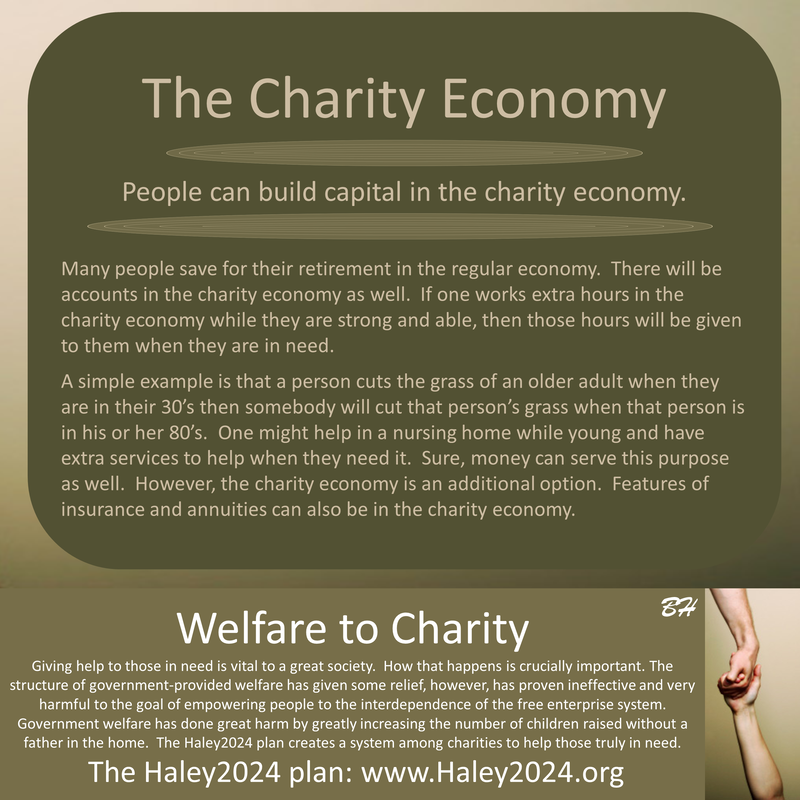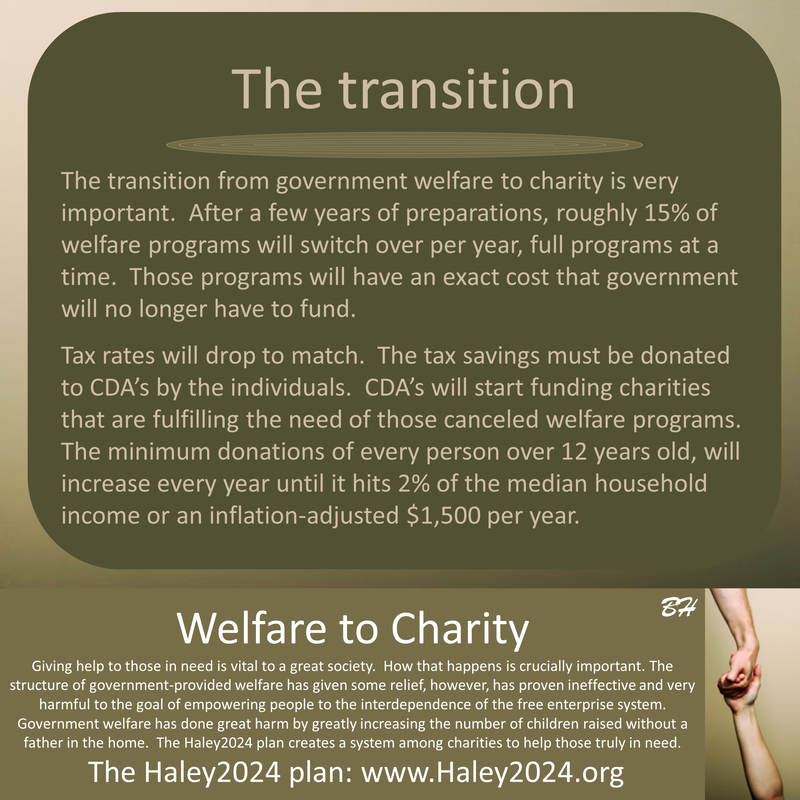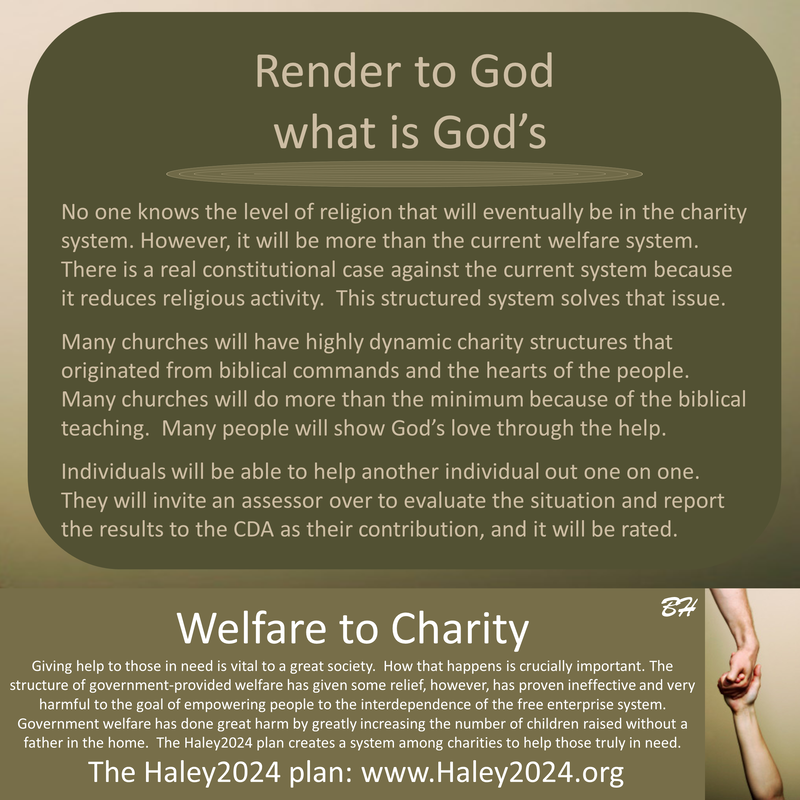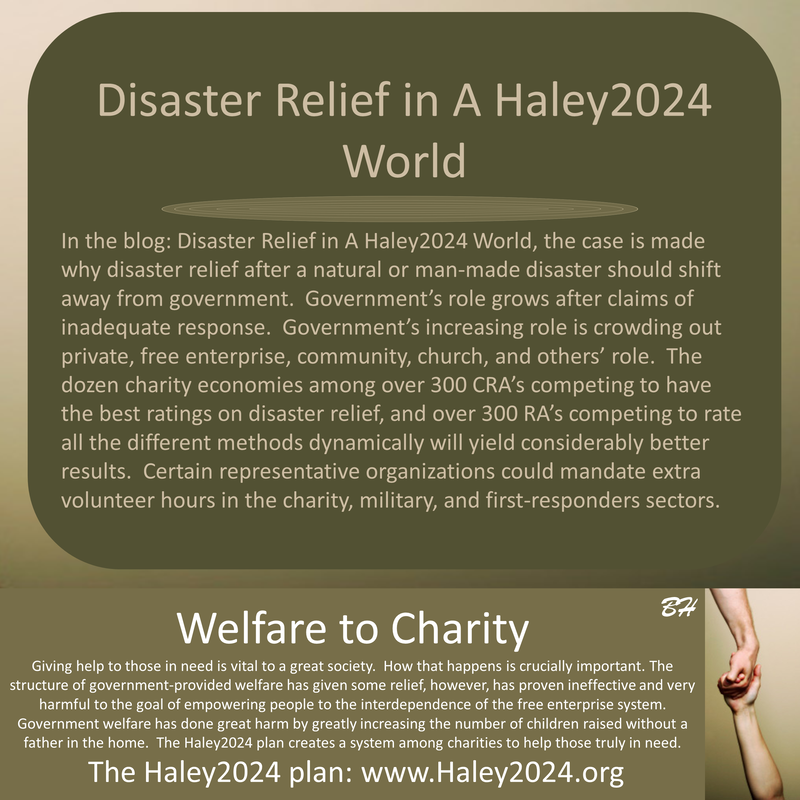The Structure of the Charity System
Taking a quick glance at all of this might indicate complexity; however, it is the complexity of the free enterprise system, not of government. Two of the greatest lessons of America’s success is government’s 'checks and balances' and representation. This structure utilizes the best of those features. The complexity truly comes from trillions of decisions by billions of people all trying to surpass each other on helping their fellow man with cooperation incentivized.
The bullet points above were updated 9-11-2021. For any minor inconsistencies, please use the updated version above. I will am leaving this page to show the progression of this idea and the reasoning behind the structure. This plan remains 98% consistent.
The Basic Structure
|
The Basic Structure
|
The Basic Structure
|
The Basic Structure
|
The Basic Structure
|
The Basic Structure
|
The Basic StructureEvery CRA, CDA, RA, and AO will have leadership with different viewpoints. If a system is set up right and the correct incentives are put in place, a supervisory or representative board has very little to do. It is likely that sector boards will be groups that collect and analyzes data from their sector and compares examples from other sectors.
Sector Boards will be involved in setting up, organizing, and enforcing rating floors with the rating system. Rating floors can only be established when negative externalities are affecting third parties. Rating floors require a 70% representative vote with a 40% vote to repeal or lower the rating floors. |
The Basic Structure
|
The Basic Structure
|
The Basic Structure
|
The Basic Structure
|
The Basic Structure
|
The Basic Structure
|
The Basic Structure
|
The Basic Structure
|
The Basic Structure
|
The Basic Structure
|
Funding the System through CDA’s
|
Funding the System through CDA’s
|
Funding the System through CDA’s
|
Funding the System through CDA’s
|
Funding the System through CDA’s
|
Funding the System through CDA’s
|
Funding the System through CDA’s
|
Funding the System through CDA’s
|
Assessor Organizations
|
Assessor Organizations
|
Assessor Organizations
|
|
Assessor Organizations
Assessors are the case managers of those that need help. A good AO will look deep into a person’s life to determine what went wrong that led to serious unmet needs. A good AO will have strong privacy protections. Many people do not help because they do not want to enable dependency or destructive lifestyles. Once a trusted AO makes the claim that the person or family are on a good path, help will flow easier.
There does not need to be an open book on the life of the needy; just the select trusted few that signs-off on a path forward. Many people do not want to know everything about the person they are helping; they just want to know that a trusted AO that shares their values has the person in need on a good path. |
Assessor Organizations
|
Assessor Organizations
|
Assessor Organizations
|
Assessor Organizations
|
Assessor Organizations
|
Assessor Organizations
|
The Rating System
|
The Rating System
|
The Rating System
|
The Rating System
|
The Rating SystemIt is difficult to determine the worth of charities. The factors are numerous. There is disagreement on the definition of success. There is disagreement on the method of measuring success. When one rating agency is dominate, charities often try to game the system by playing to their metrics. With roughly a dozen RA’s that have different methods and values, every citizen will have an RA that is close to their way of thinking.
The major reason to build the rating system into the CRA system versus allowing private rating agencies to just develop on their own is that RA’s have certain authorities to look deeper into an organization or business to find the good and the bad. Often, charities have large transaction cost to prove their worth. Worth is usually demonstrated over time. |
The Rating System
|
The Rating System
|
The Rating System
|
The Charity Economy
|
The Charity Economy
|
The Charity Economy
|
The Charity Economy
|
The Charity Economy
|
The Charity Economy
|
The Charity Economy
|
The Charity Economy
|
The Charity Economy
|
The Charity Economy
|
The Charity Economy
|
The transition
The transition from government welfare to charity is very important. After a few years of preparations, roughly 15% of welfare programs will switch over per year, full programs at a time. Those programs will have an exact cost that government will no longer have to fund.
Tax rates will drop to match. The tax savings must be donated to CDA’s by the individuals. CDA’s will start funding charities that are fulfilling the need of those canceled welfare programs. The minimum donations of every person over 12 years old, will increase every year until it hits 2% of the median household income or an inflation-adjusted $1,500 per year. |
Render to God what is God’sNo one knows the level of religion that will eventually be in the charity system. However, it will be more than the current welfare system. There is a real constitutional case against the current system because it reduces religious activity. This structured system solves that issue.
Many churches will have highly dynamic charity structures that originated from biblical commands and the hearts of the people. Many churches will do more than the minimum because of the biblical teaching. Many people will show God’s love through the help. Individuals will be able to help another individual out one on one. They will invite an assessor over to evaluate the situation and report the results to the CDA as their contribution, and it will be rated. |
|
In the blog: Disaster Relief in A Haley2024 World, the case is made why disaster relief after a natural or man-made disaster should shift away from government. Government’s role grows after claims of inadequate response. Government’s increasing role is crowding out private, free enterprise, community, church, and others’ role. The dozen charity economies among over 300 CRA’s competing to have the best ratings on disaster relief, and over 300 RA’s competing to rate all the different methods dynamically will yield considerably better results. Certain representative organizations could mandate extra volunteer hours in the charity, military, and first-responders sectors.
|


